The Burr Catalog
An attempt to understand the naming scheme
Burrs are what makes your coffee beans turn into a useful substance to make coffee out of, be it espresso, pour over, moka pot or Aeropress. The ‘grinder’ itself is only a tool to enable the burrs to do their thing. As long as any grinder A, B or C is able to spin burr X in a good fashion, theoretically, they should perform identically in the cup. Atleast that is the notion behind high perfomance burr manufacturers. Other factors the grinder influences are RPM, Burr alignment, bean feed speed, static-screen (causes ‘regrinding’) and possibly many more. Don’t forget to factor in workflow in any future grinder purchases either.
Before continuouing this quest for the perfect equipment, watch Lance Hedricks truthbomb video
High perfomance burrs
This wiki page contains an overview of existing high-perfomance burrs. Many of which are not made by the OEM of the grinder, but a third party. SSP (Sim Sung Precision) Grinding is a big player here. We also cover some exceptional burrs from OEM. Mahlkönig / Ditting has a long track record of designing excellent burrs, which look like the basis for many SSP burrs (not getting into legal issues here).
There are hundreds of ‘standard-espresso’ design burrs. We won’t cover those, since most of them perform relatively the same, creating a lot of fines and not a very uniform, or unimodal grind.
Taste
This being a minefield of contradictions.. I try my best.
Burrs change big beans into small particles. The uniformity (size, shape) of these particles have big impact in taste. Burrs can also be unimodal or bimodal (mostly particles of size X or mostly particles of size X and Y). They of course also can be none of the above.
Again generally more fines give more body/mouthfeel, and less flavor seperation or ‘more mudiness’. Less fines give less body/mouthfeel / a ‘thin’ shot, and more flavor seperation or clarity (minefield)
Apart from the ‘safe space’ of any burr below, a lot of burrs can be dialed to a different taste, meaning that you, the user, still have a lot of influence on what comes out apart from the machine. There are limits of course to what you can create, a burr is just one of the tools in your quiver.
Back to the burrs
What we mean by a ‘standard’ espresso burr
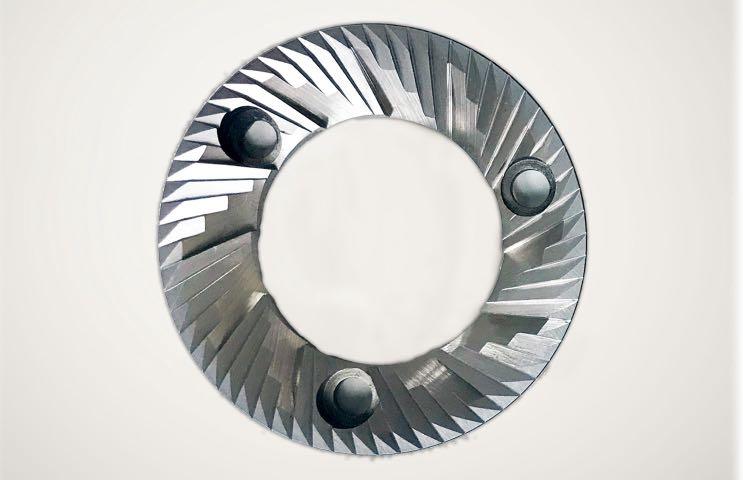
“Standard espresso burr” - this one is from ItalMill (DF64 stock)
We also won’t cover conical burrs, mainly due to lack of available third party burr options. Short mention here however is that most flatburrs give a more uniform grind, with less fines than most conical burrsets.
Identifying burrs
How to identify burrs? Let’s start with the basics:
- Outer diameter/OD (64mm, 83mm, 98mm etc)
- Mounting (2 hole, 3 hole, blind)
- Geometry (Some have ‘names’ which can be very confusing and contradictory)
- Coating/material (“Red Speed” - “SilverKnight” - “Titanium” - “Tungsten Carbide”)
Geometry basics:
Burrs consist of different parts, we name them to easier talk about it.
Prebreakers marked Red – Flats marked white:
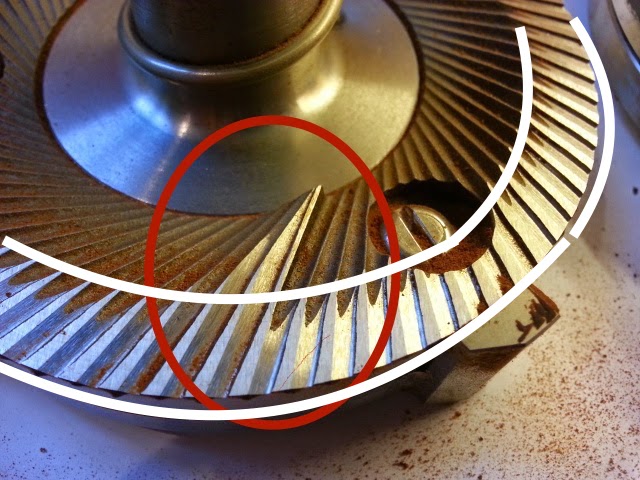 Prebreakers & flats on a standard EK43 98mm burr
Prebreakers & flats on a standard EK43 98mm burr
Contents
[ table ]
Not all burrs are in this (subjective) overview, but to give you an idea of the spectrum and where burrs lie in, and an idea why we care so much about burrs:
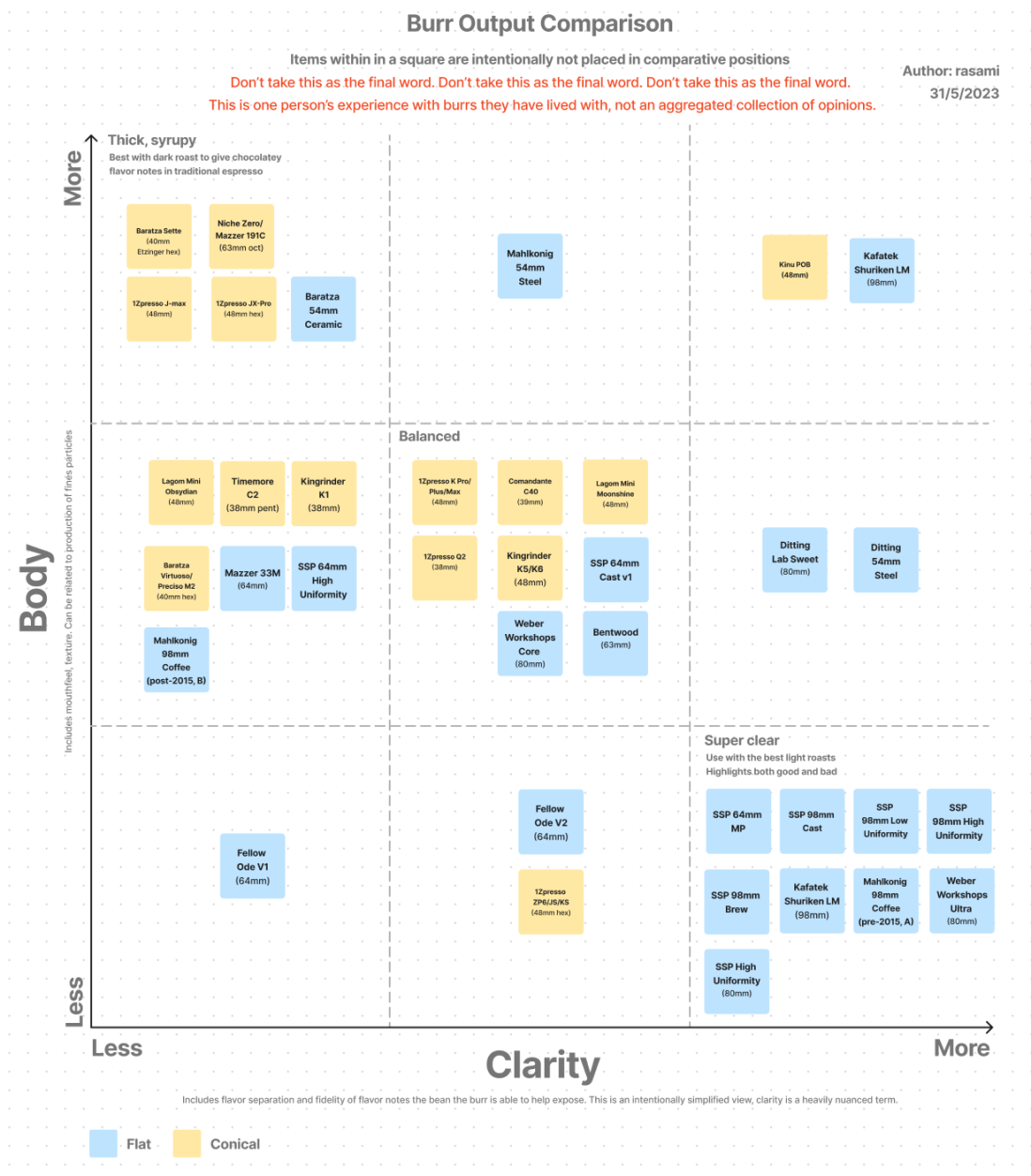
Overview of 64mm burrs
SSP 64 HU
The SSP 64 High Uniformity is an espresso focused burr, meaning it can easily grind fine enough for espresso, and be easy to dial in. 64 HU gives a full-bodied shot, while it also provides more flavor seperation than “stock burrs”, making it an excellent option for people looking for tasty espresso, that still provides the body/mouthfeel they’re looking for. Not considered as high clarity - more a good middle ground between body/mouthfeel and excellent flavors.
To start with, the 64HU in both SSP coatings. Red Speed (Red):
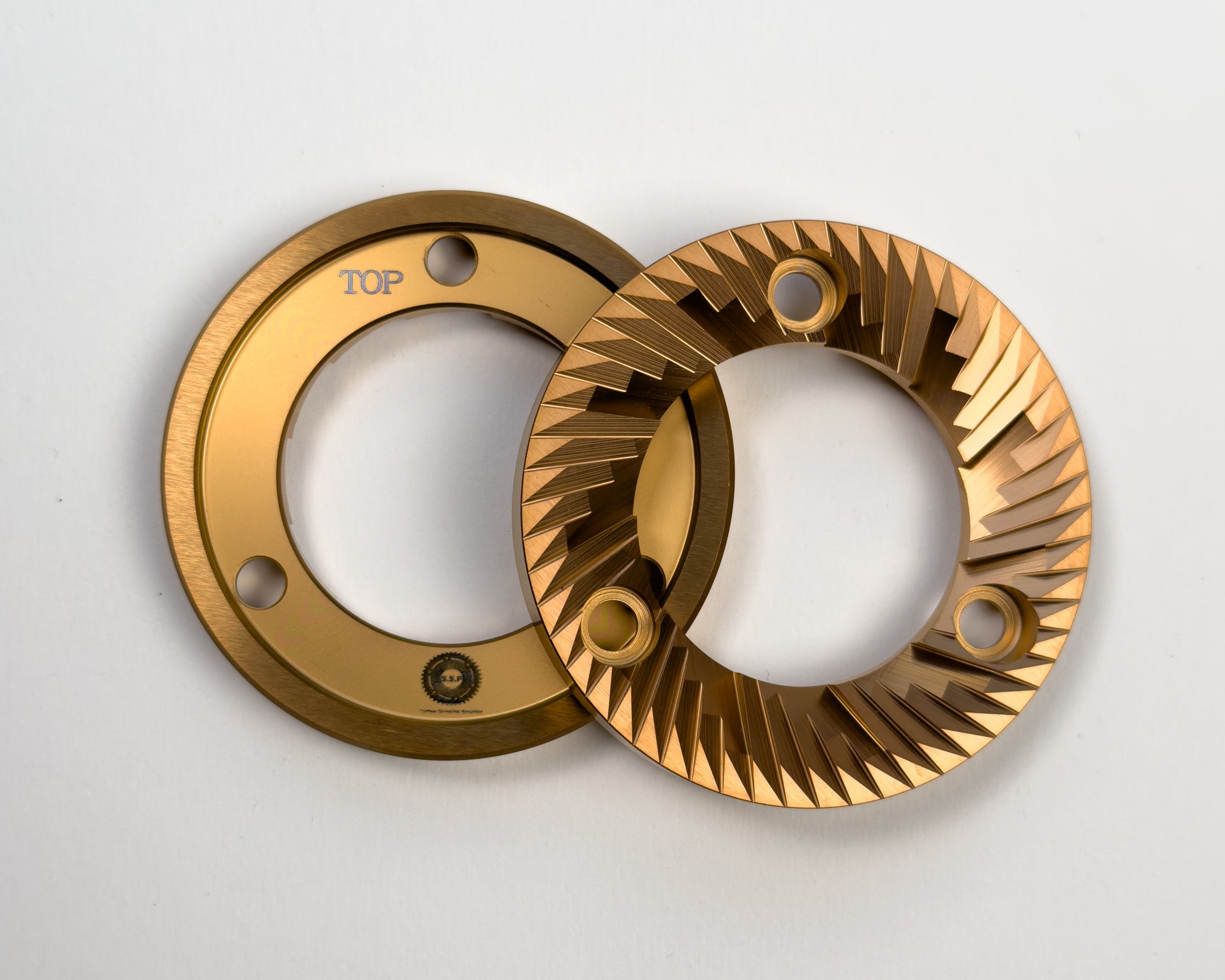
And Silver Knight (SK): 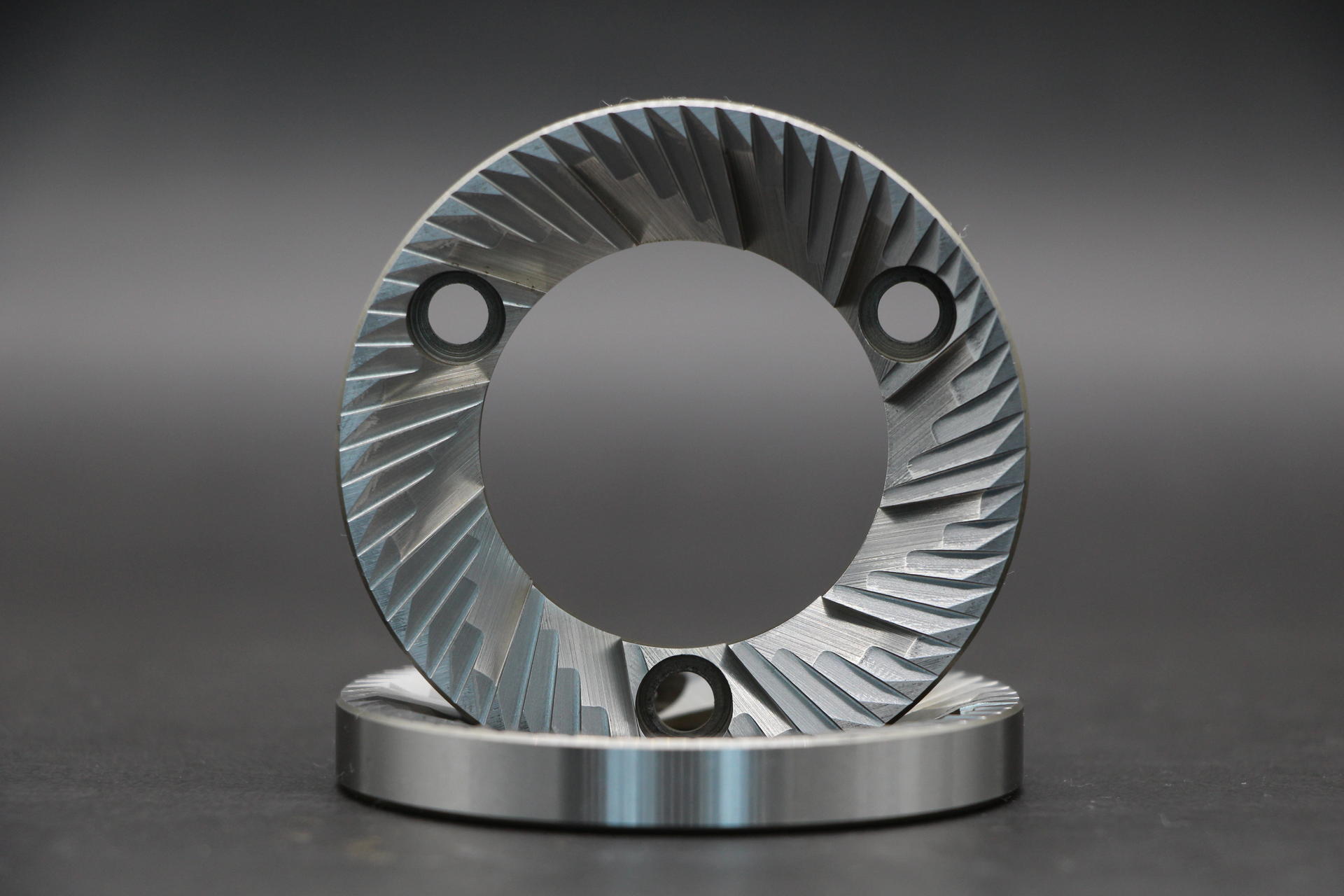
SSP 64 MP
SSP 64 Multi-Purpose (as in both brew & espresso) is considered the high clarity burr in the 64mm landscape. It gives good flavor seperation at the cost of thin shots / a lack of body/mouthfeel. Acids can get very pronounced which might not be to your liking (astringency lures around every corner). However the MP is said to express the fruity notes the best. Not for everyone! Don’t fall into the high clarity = best rabbithole. Can be very ‘harsh.’, hard to dial in and thin.
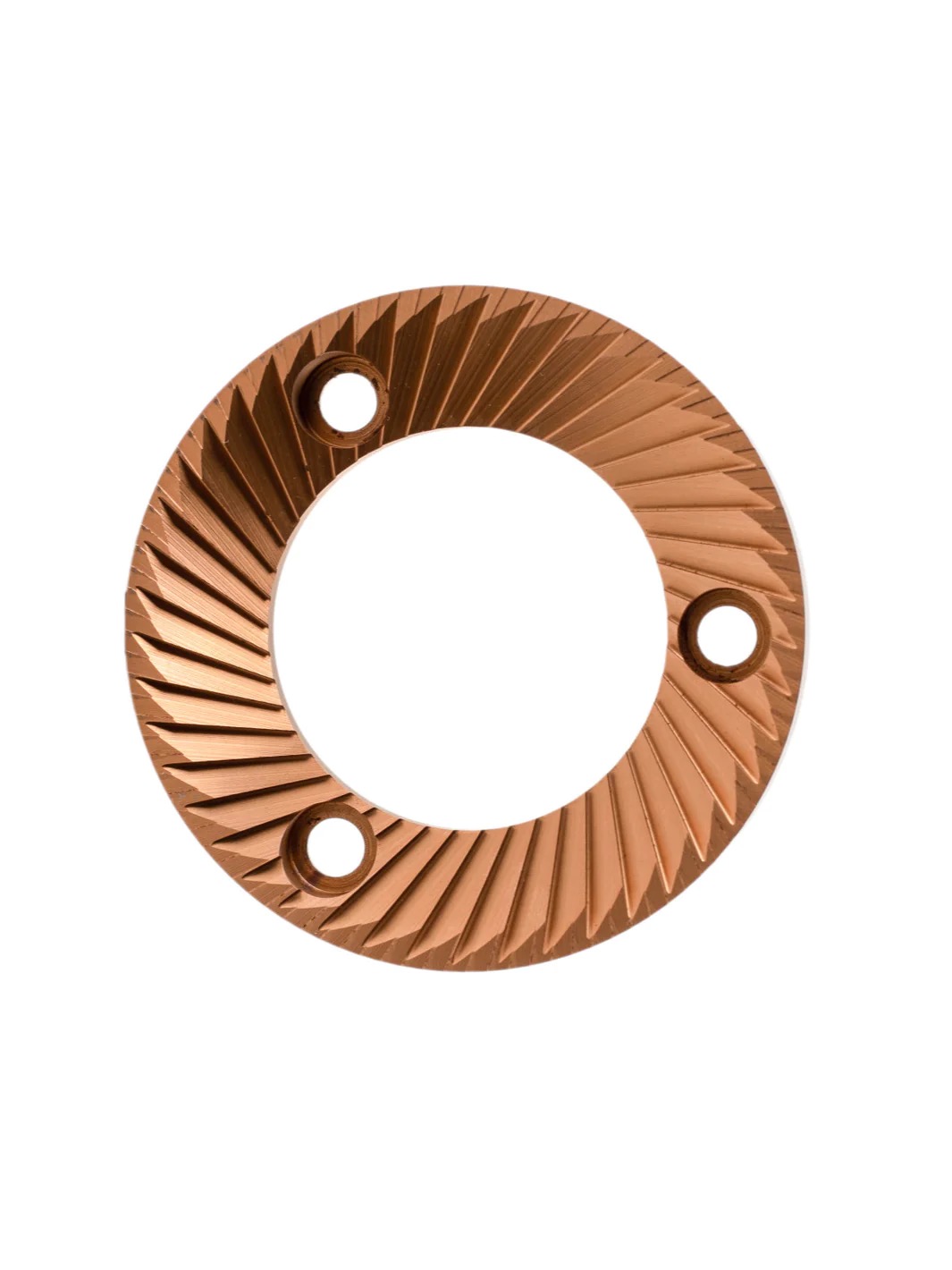
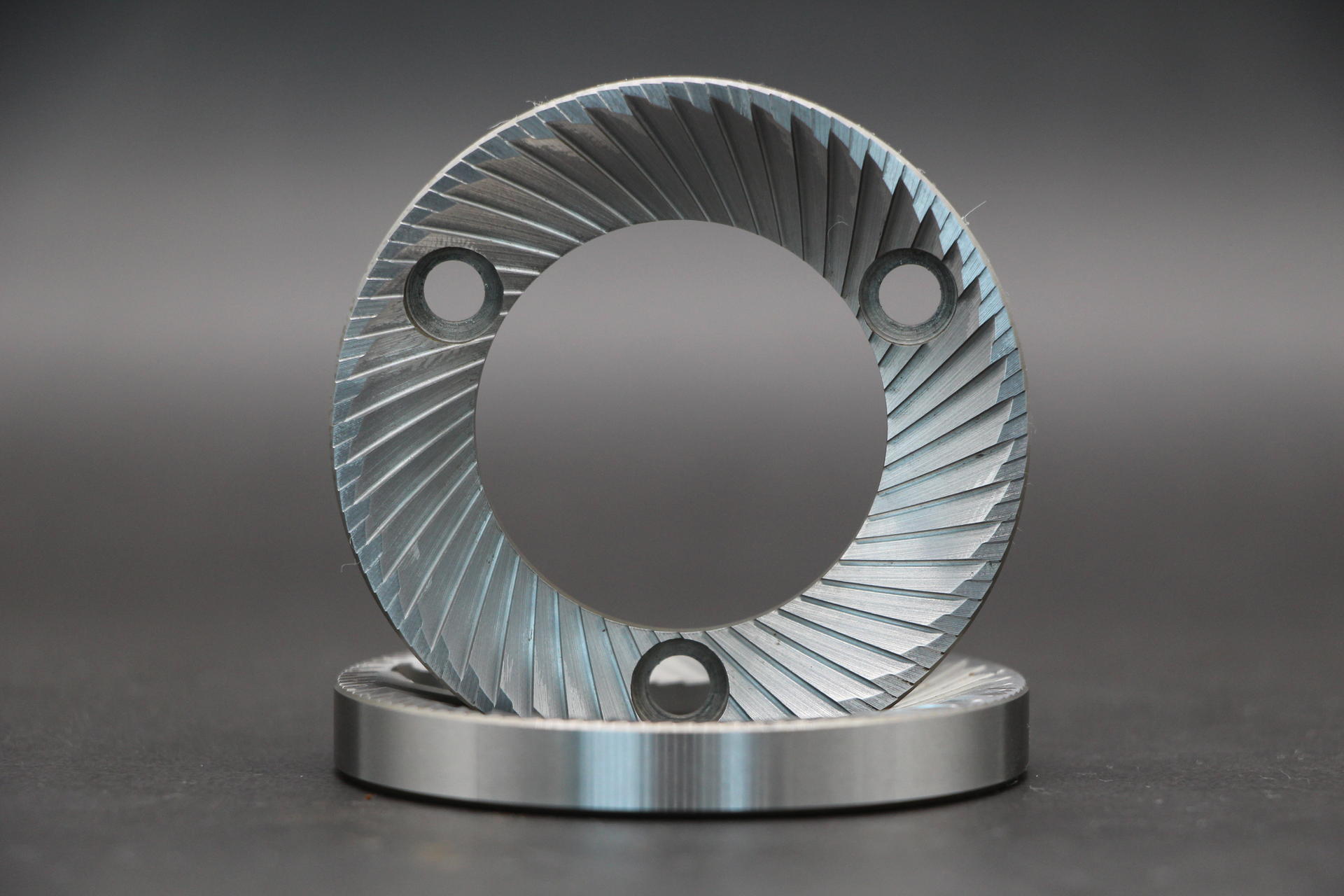
SSP 64 Brew
SSP 64 ‘Brew’ - An ‘older version’ of 64MP, now brought back to life due to high demand. Very capable to do espresso. Very similar to 64MP. Main difference being less ‘flat’ flats or what we call more outfall. Some consider it as slightly better flavor seperation than the MPs. See the images that shows them next to MP. The difference is very hard to see and mostly (only?) the flats. The Brew has more sawtooth, the MP has more zigzag or complete flat in some revisions.
Silver: 64 BREW, Red 64 MP (note there are still many other revisions of MP)
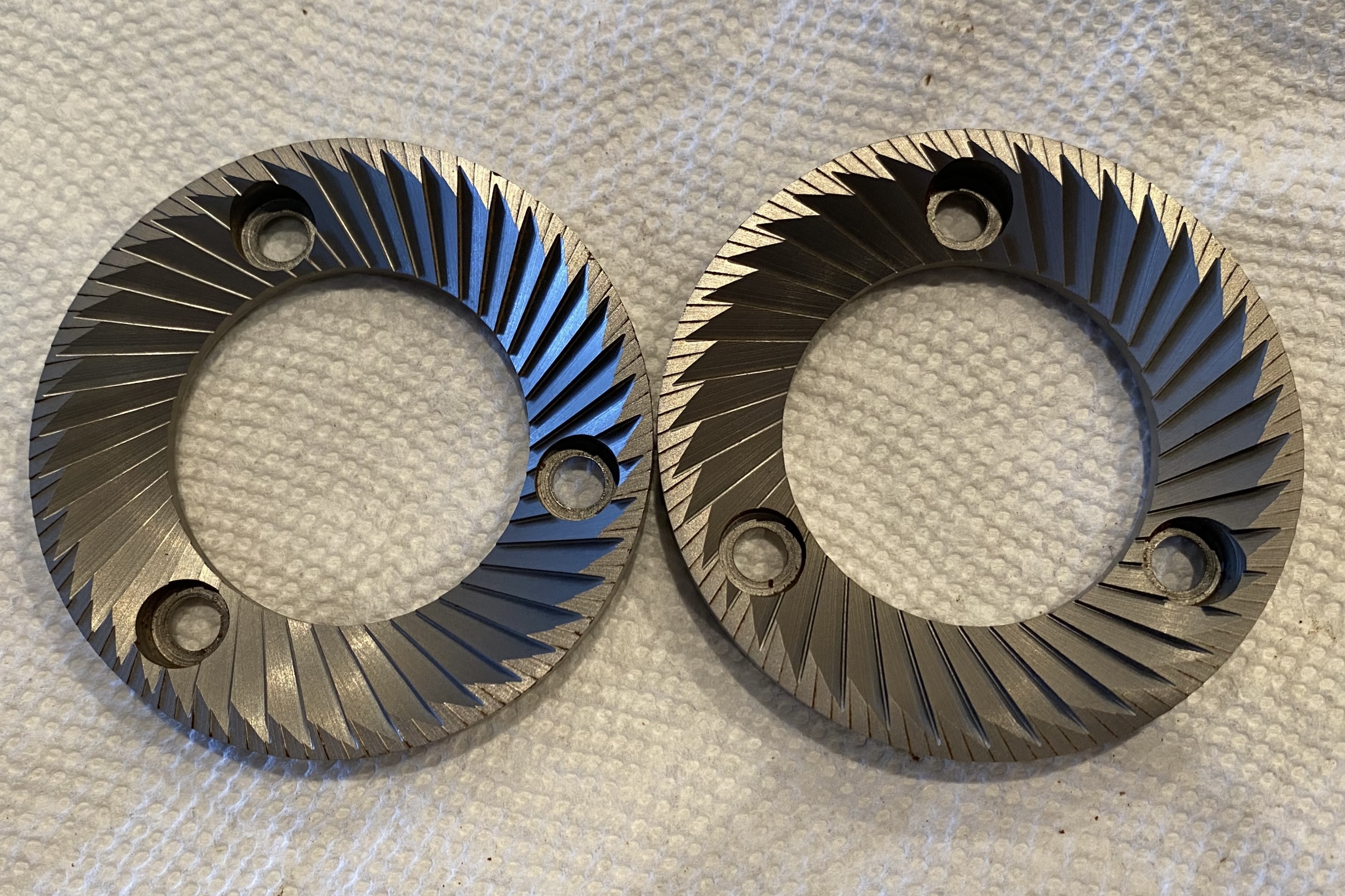

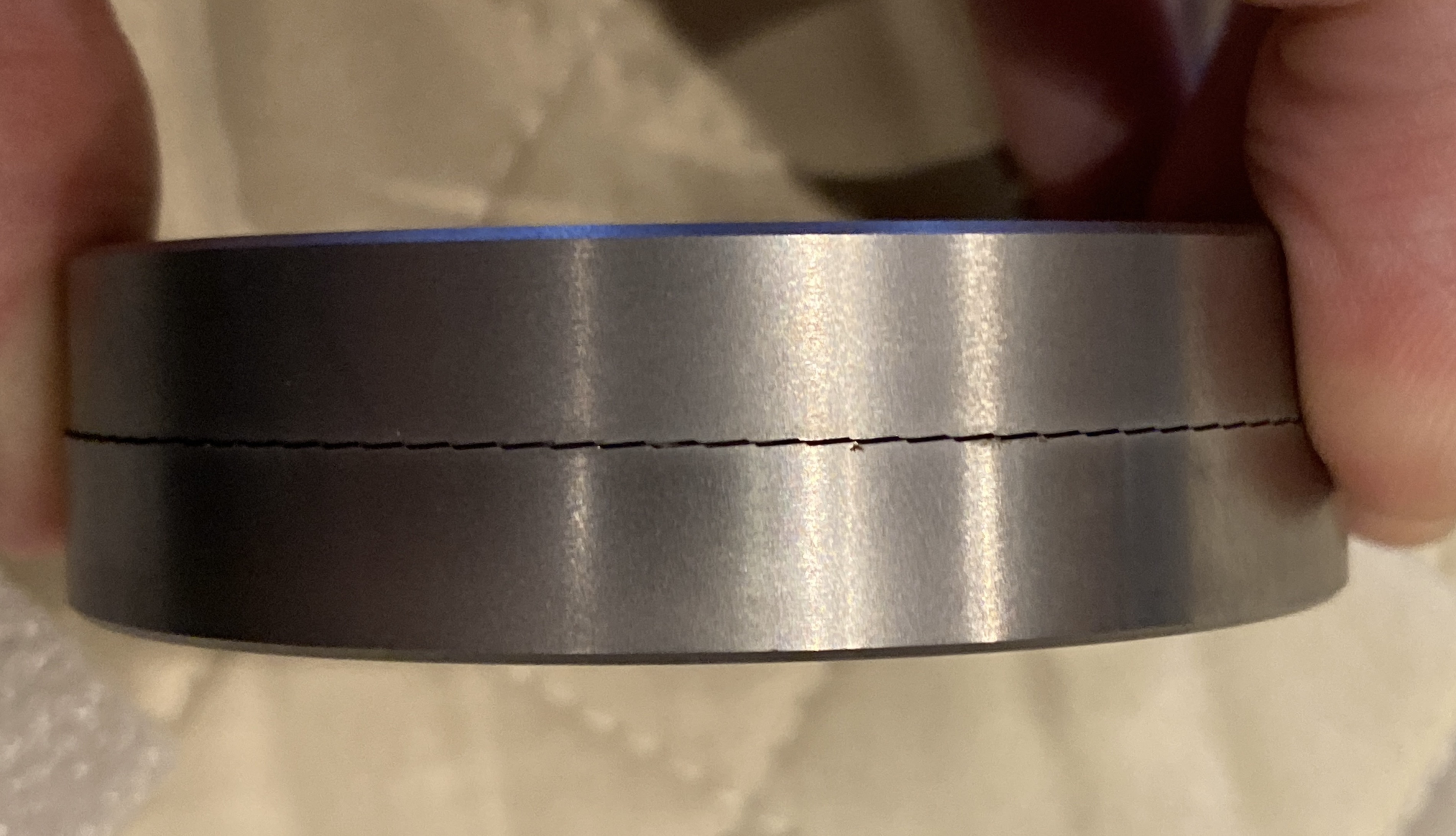
SSP 64 Lab Sweet (‘Cast’) / Cast V2 / ‘CV2’
An adaptation of the Ditting 80mm Lab Sweet burrs found in the Ditting 804 and 807 ‘LS’ to fit common 64mm mounting. Also considered the ‘sweet spot’ between body and clarity (minefield). It is said to have more flavor seperation than HU, however provide more body than MP. If you’re unsure about which 64mm burr for espresso is best for you, 64 Cast is a good choice as it’s a good middle ground.
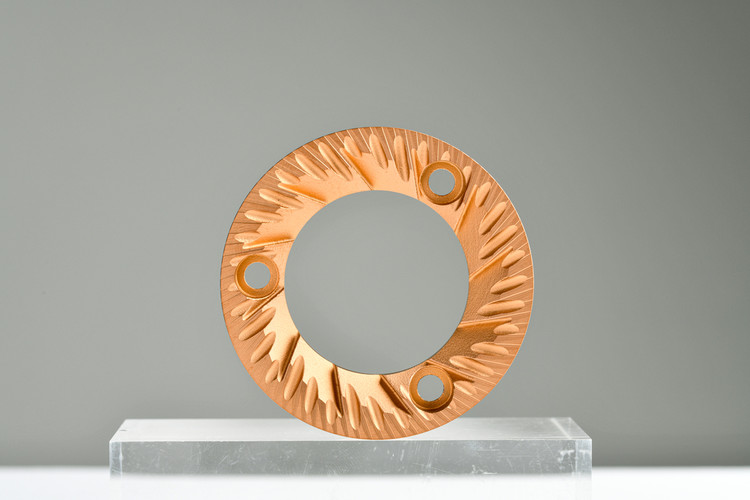
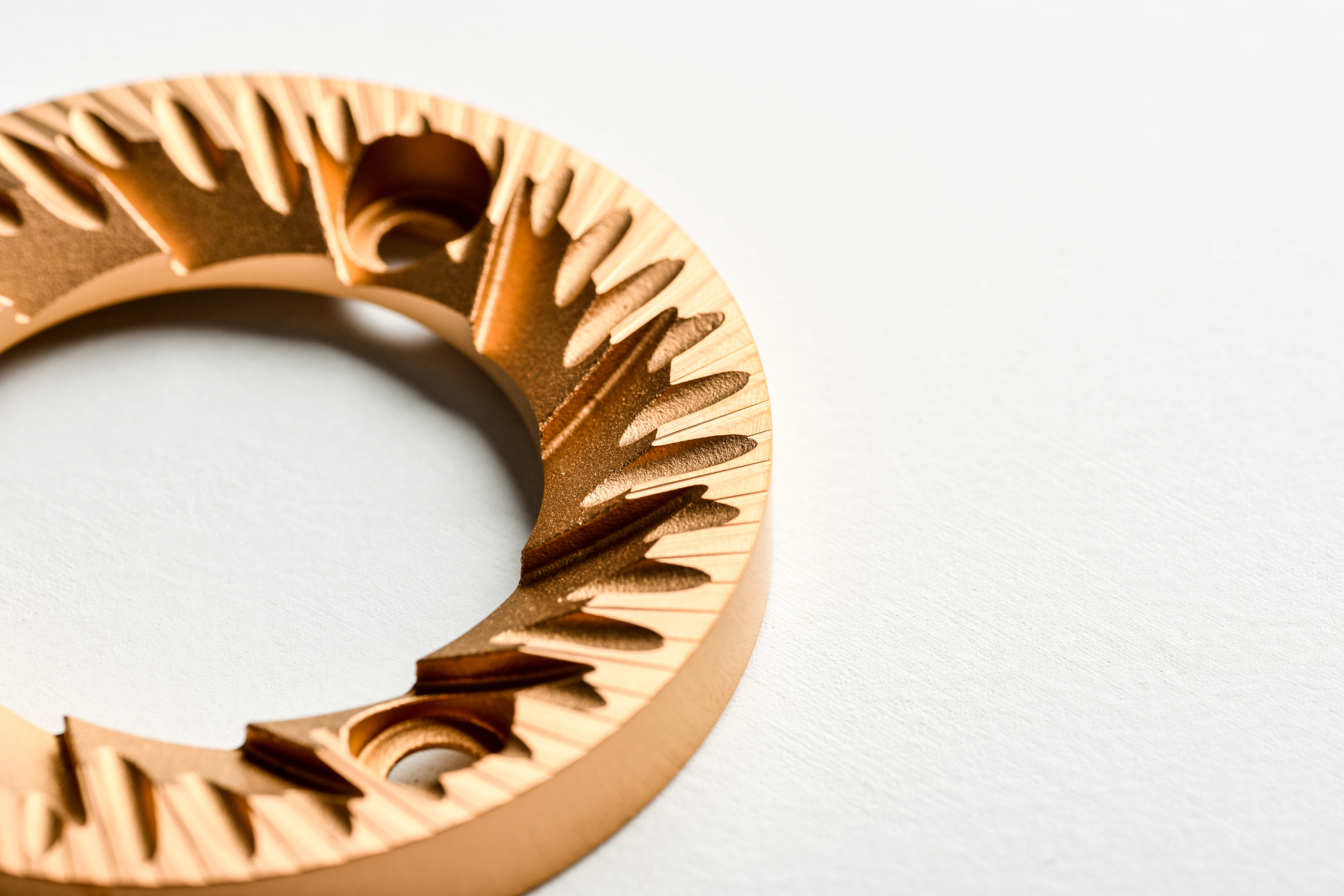
Overview of 80mm burrs
Ditting/MK 80 Cast Lab Sweet (‘Cast’)
The ‘Original’ cast burrs from Ditting. Also come in this same geometry but non-cast. Found in the 804 and 807LS and also fit the Mahlkonig PEAK and E80S. People like this one better in most ways than the 64 clones, however these only fit the Ditting grinders.
Also short note of factuality: 80mm burrs have a bigger surface area than 83mm burrs.
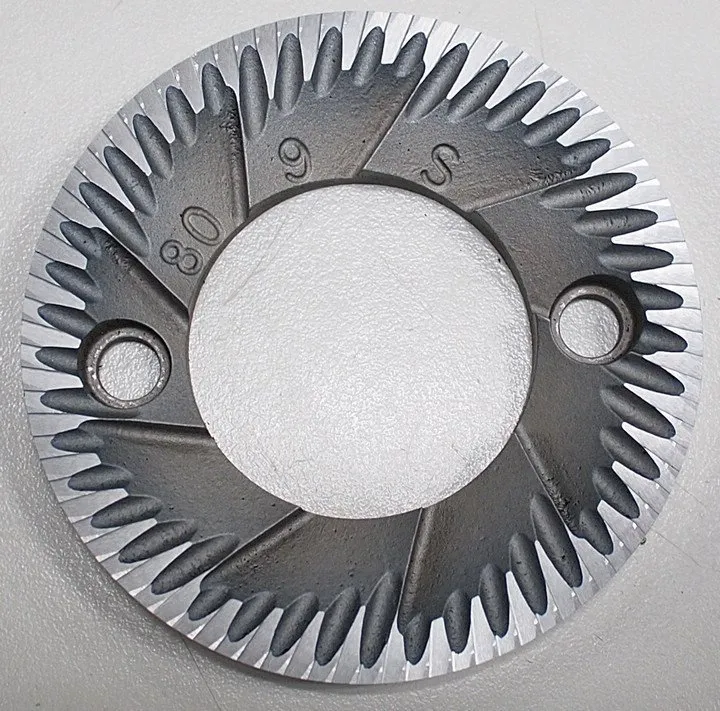
Ditting 80 machined (‘804 machined’)
Note: There is also a Mahlkonig 80 Lab Sweet Machined burr, which can be found in the Mahlkonig 80mm grinders (PEAK and E80S)
This one is different and only really found in the Ditting 804 and 807 (non’LS’) or bought directly from OEM. Do fit in the E80S & PEAK.
The ‘standard’ burr found in the 804 and 807 non LS. Many have reported that it doesn’t grind fine enough for classic espresso. They are among the clearest 80mm burrs but have integrated acidity instead of super punchy upfront SSP type acidity.
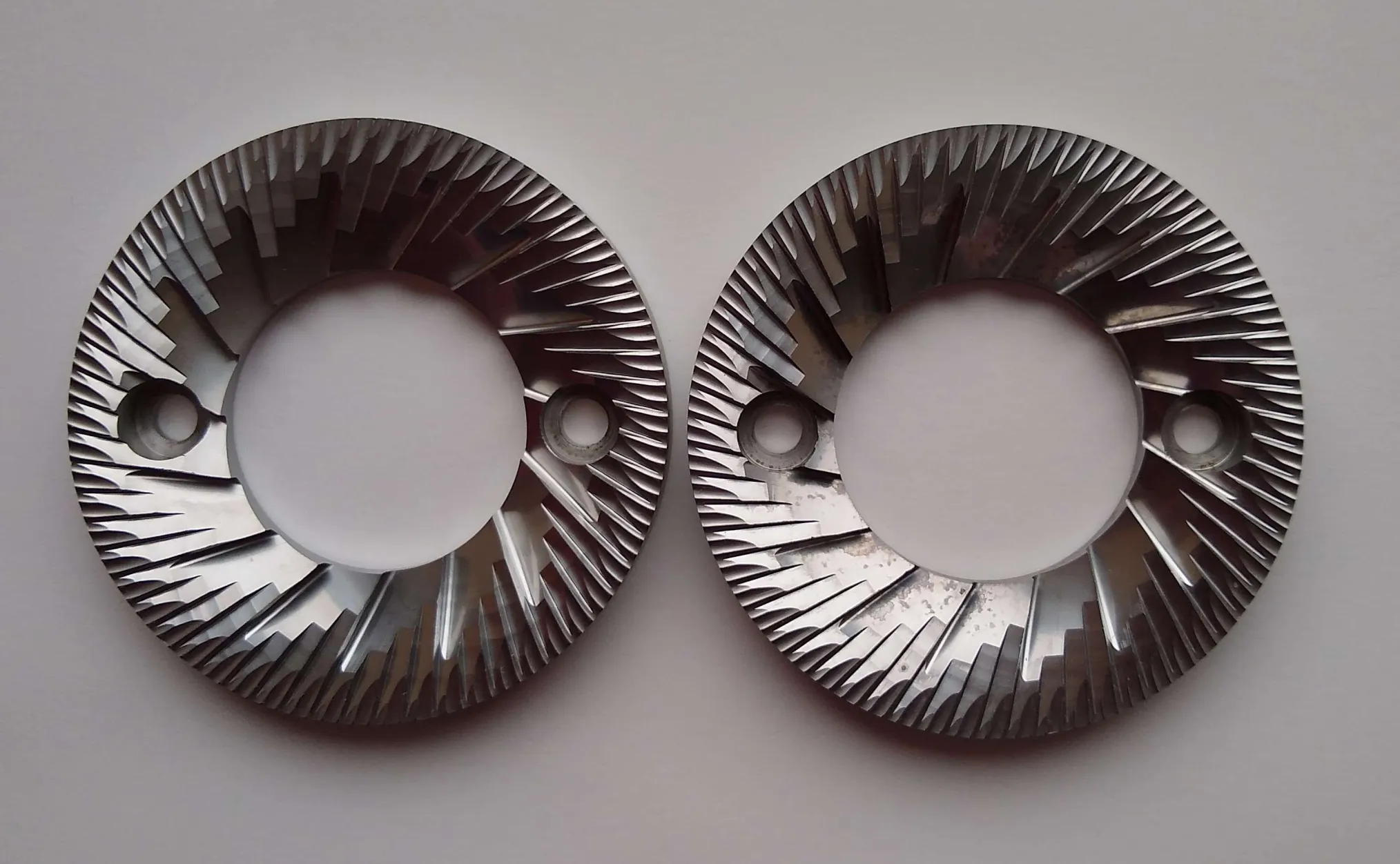
EG-1 Core & Ultra
EG1 core & ultra are 80mm blind burrs that fit the EG-1 and WUG-2 (with the right carrier) For taste,
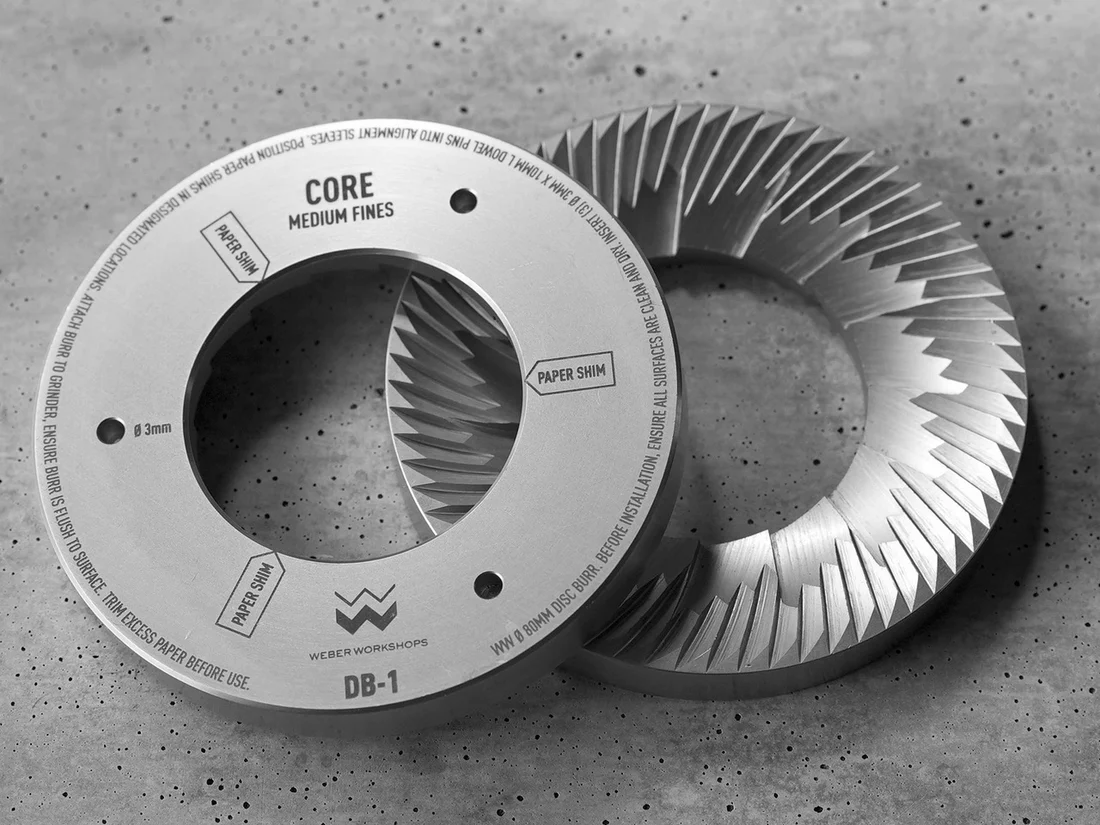

Overview of 83mm burrs
SSP 83 HU
SSP 83mm HU. The ‘Original’ 83mm SSP burr. Before the DF83 came out this size didn’t get much attention from HanSung. Compared to 64HU, 83 HU shifts more towards flavor saparation and lies closer to 98HU, while still retaining the body. However since 83mm has been more upcoming, not many comparasisons are available. Solid choice, however.
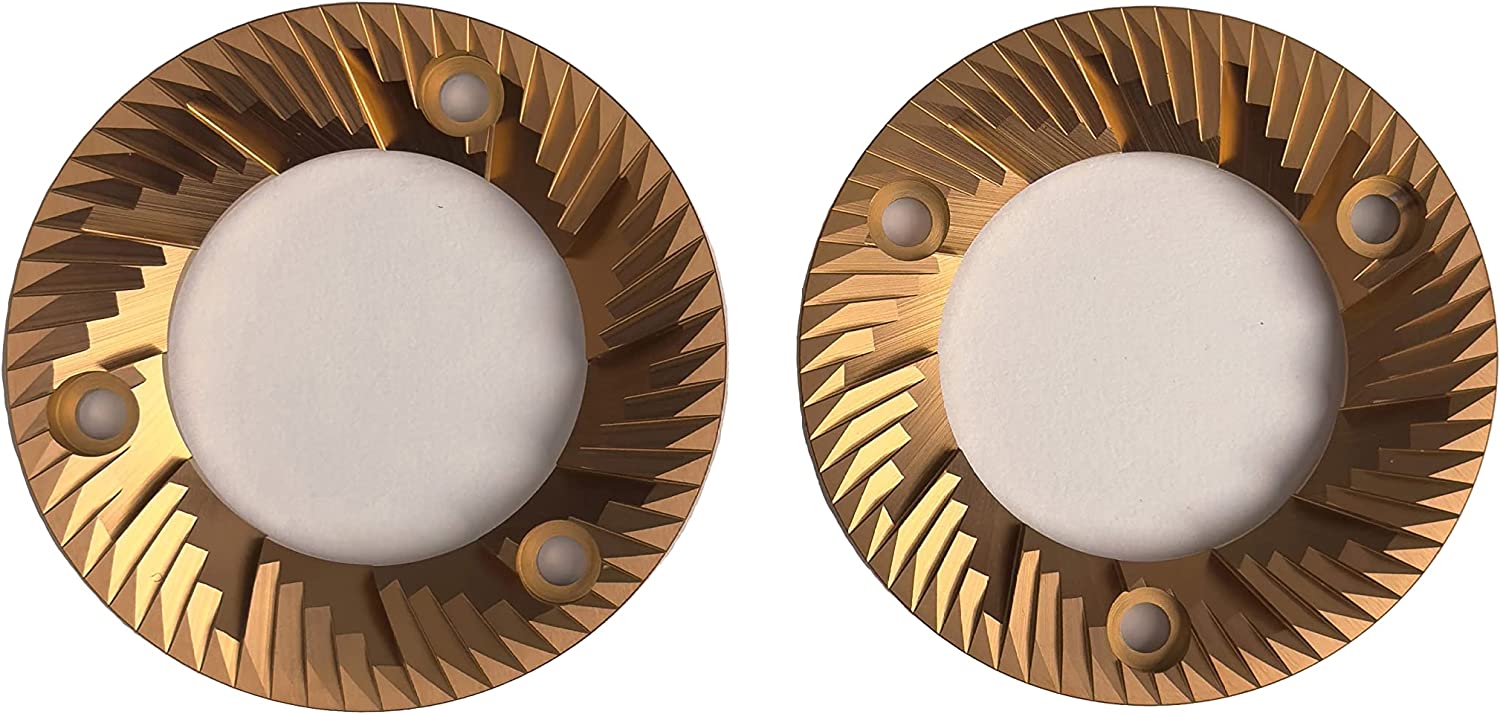
Size difference VS 64mm:
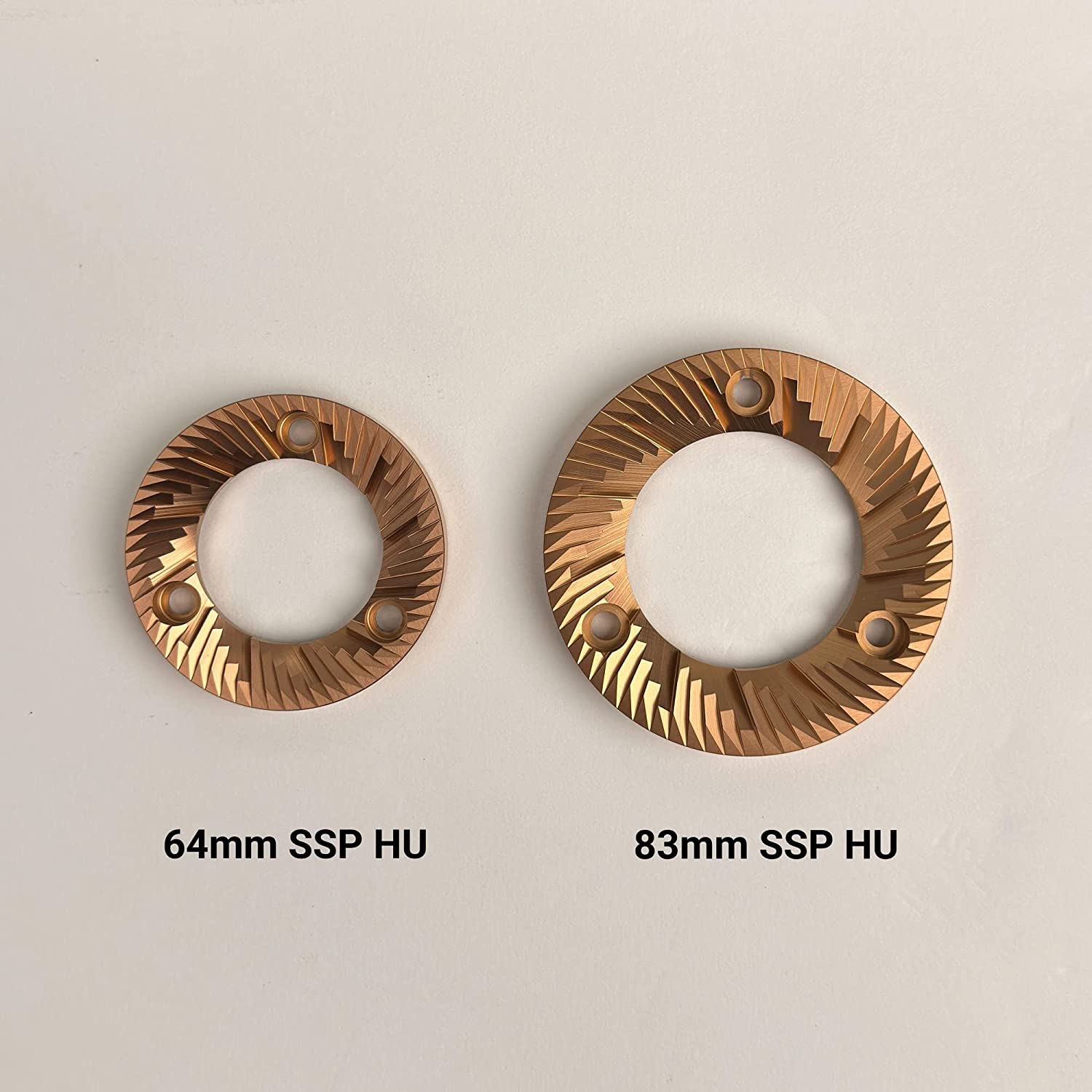
SSP 83 MP
SSP83 MP. More new burrs.. not much info on this one yet!
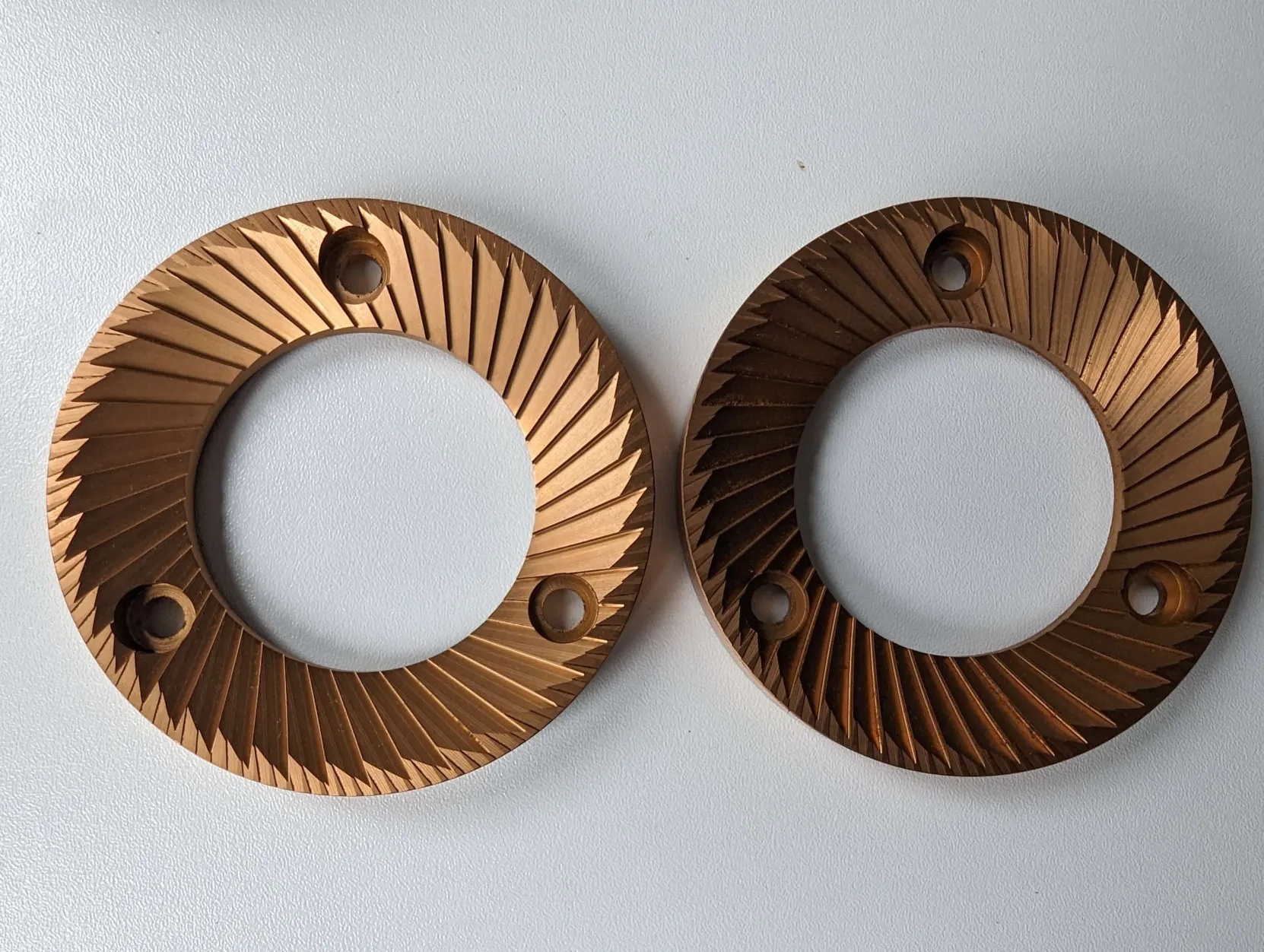
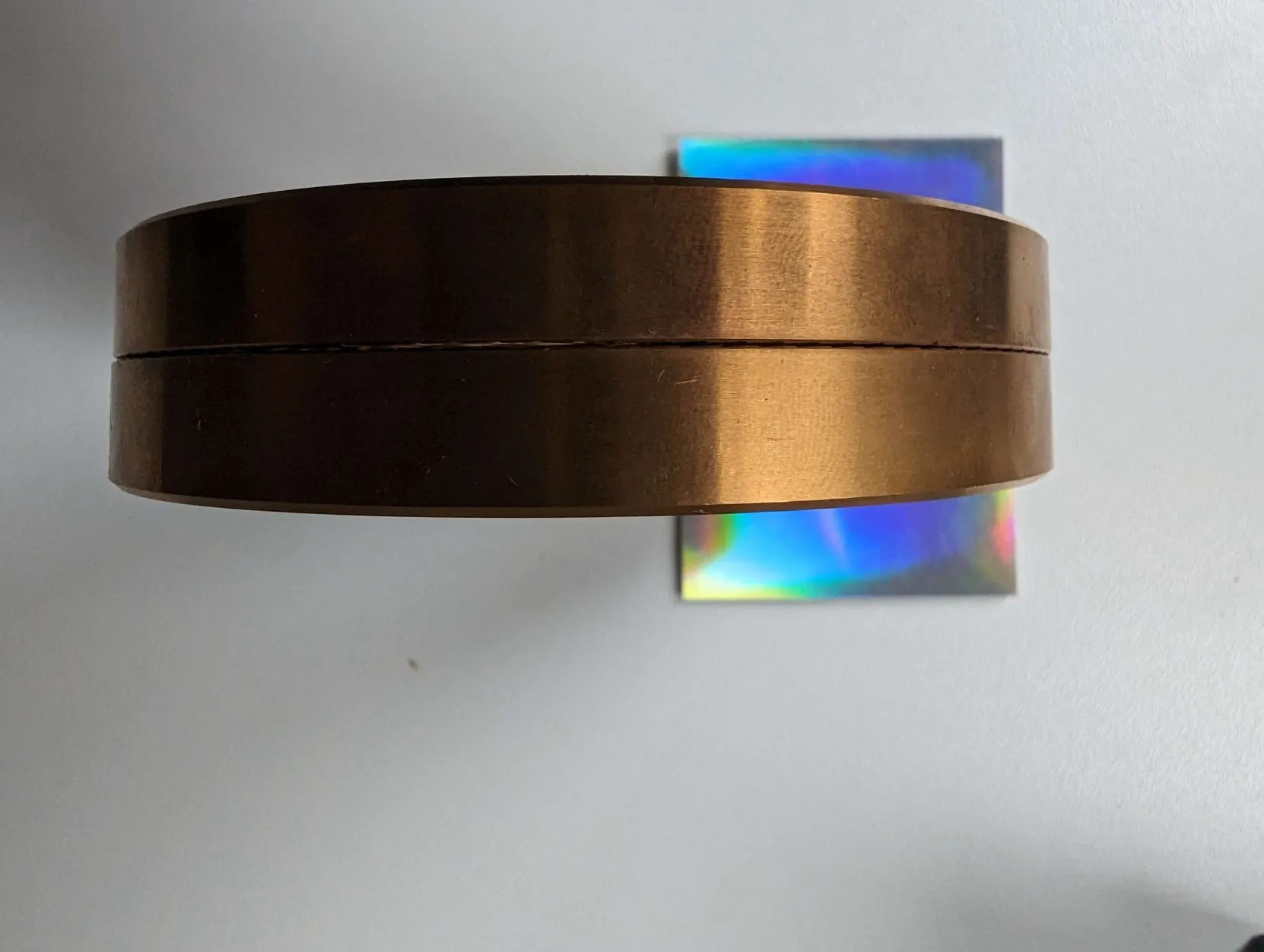
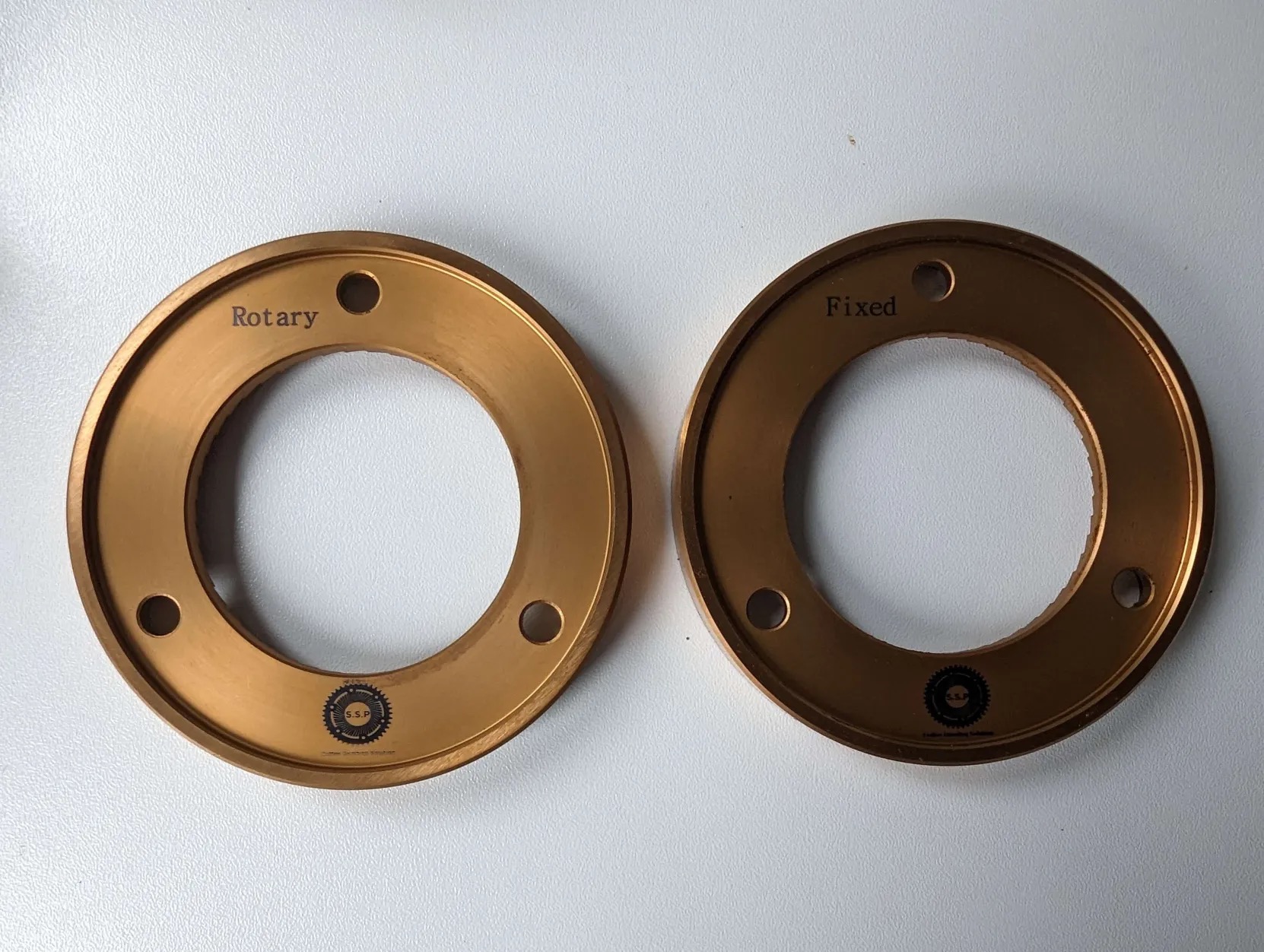
SSP 83 LS
SSP 83 Cast ‘Lab Sweet’ Also quite new; Positive reviews so far, but that might for now still be buyers bias ;) - Could be a great middle ground again for 83mm.
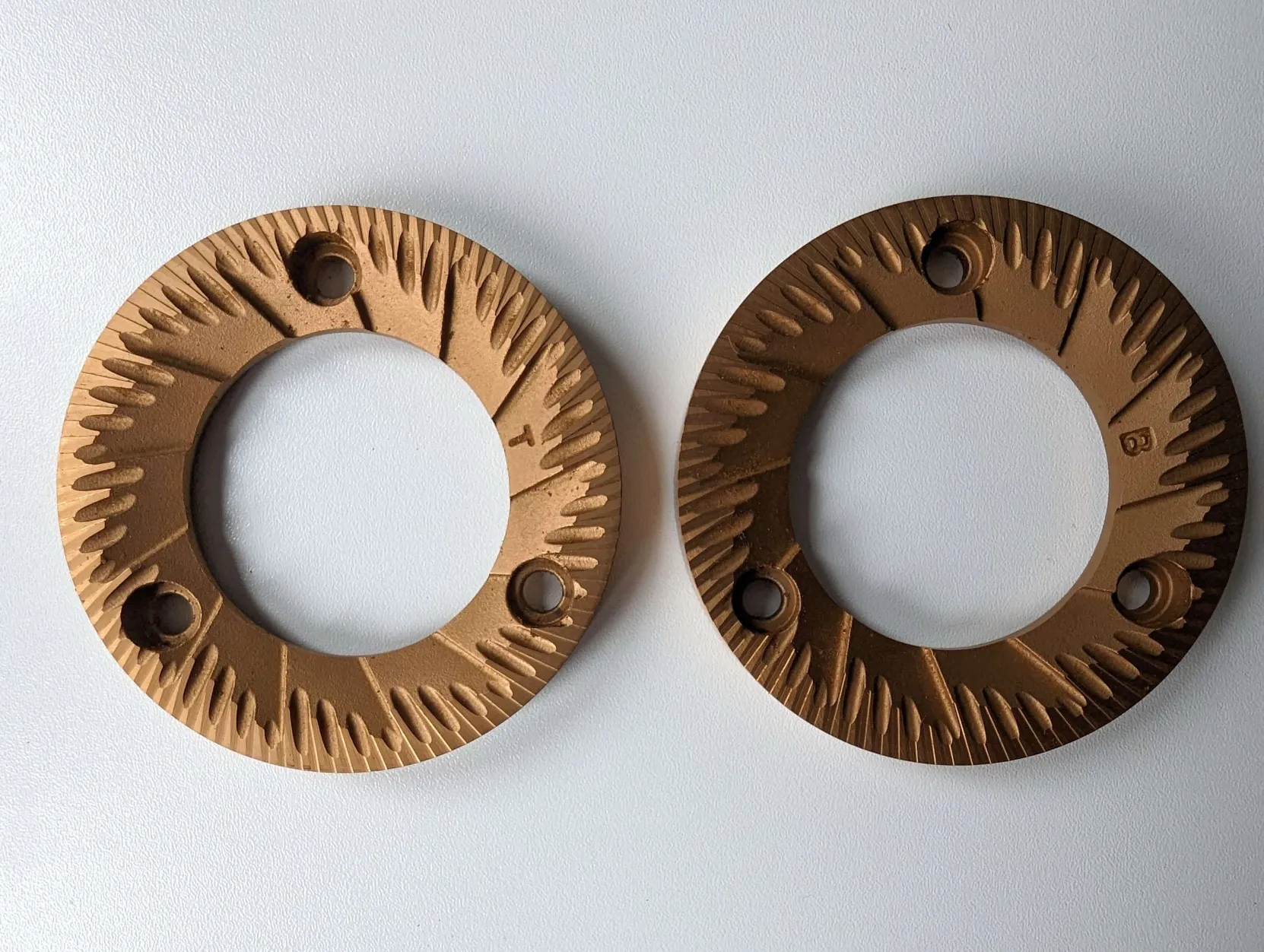
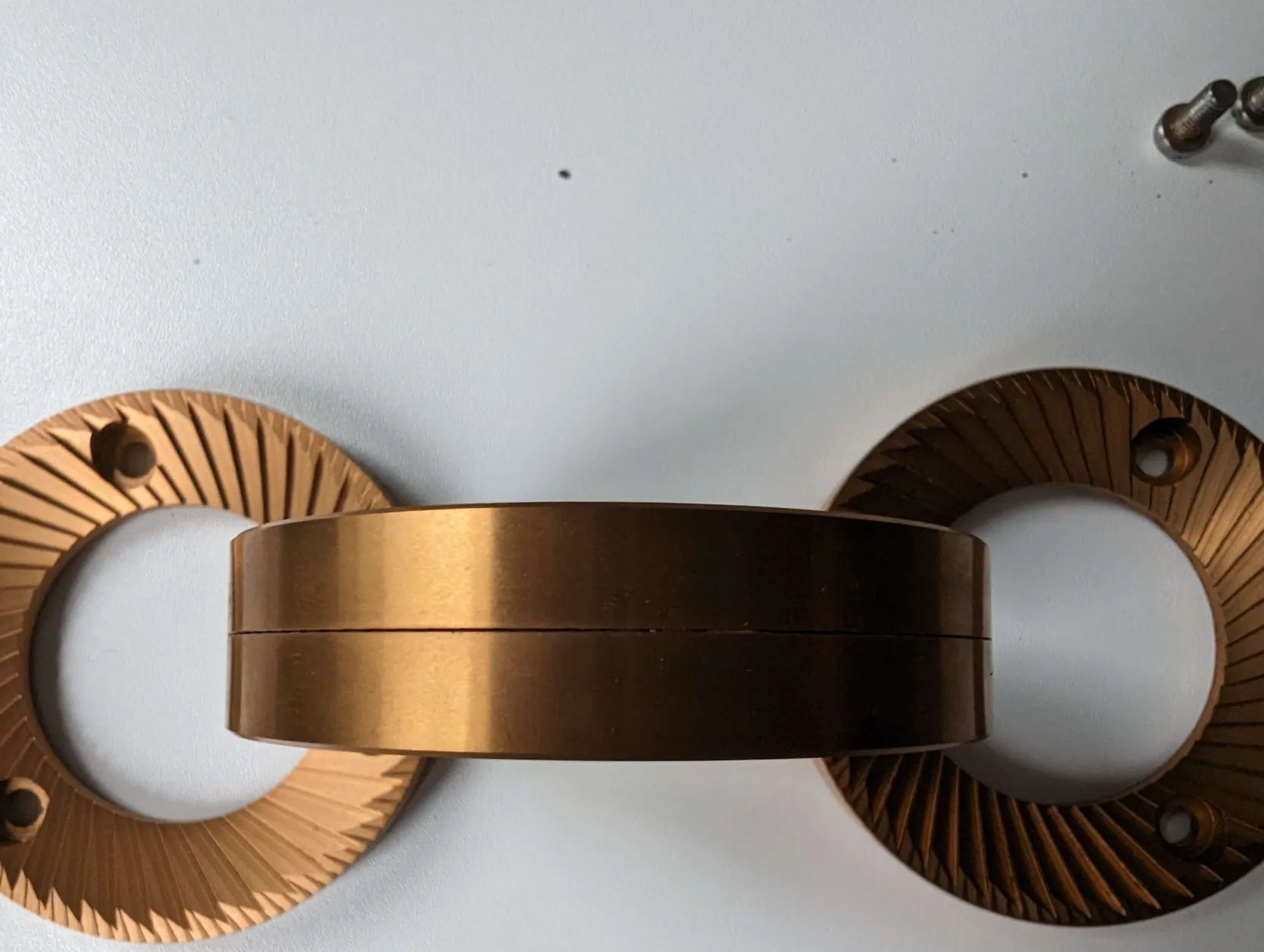
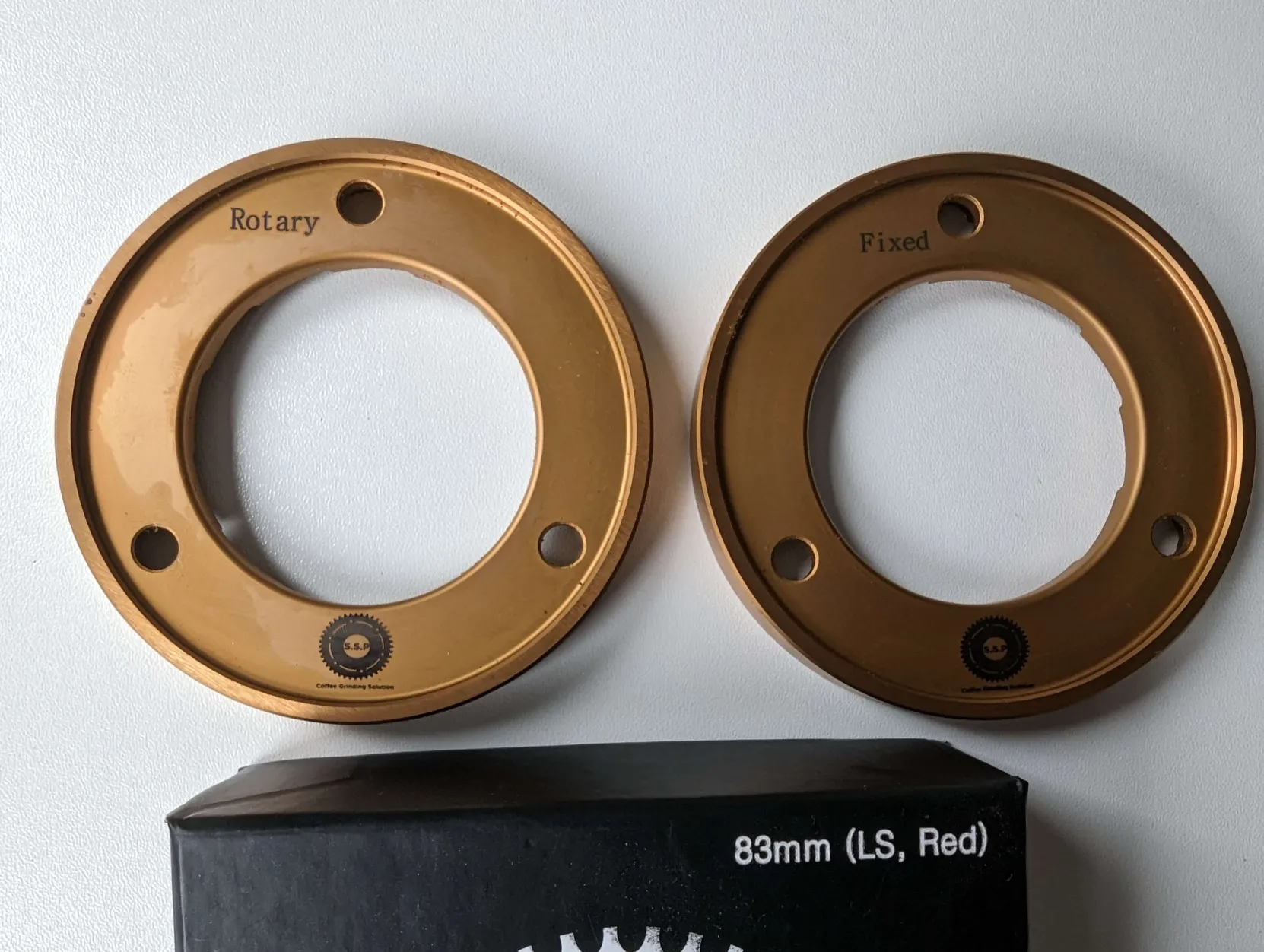
Overview of 98mm Burrs
There has been much discussion over which burrs to choose, and apart from the ‘sproability’ (can build pressure on espresso) of some burrs, dont forget:
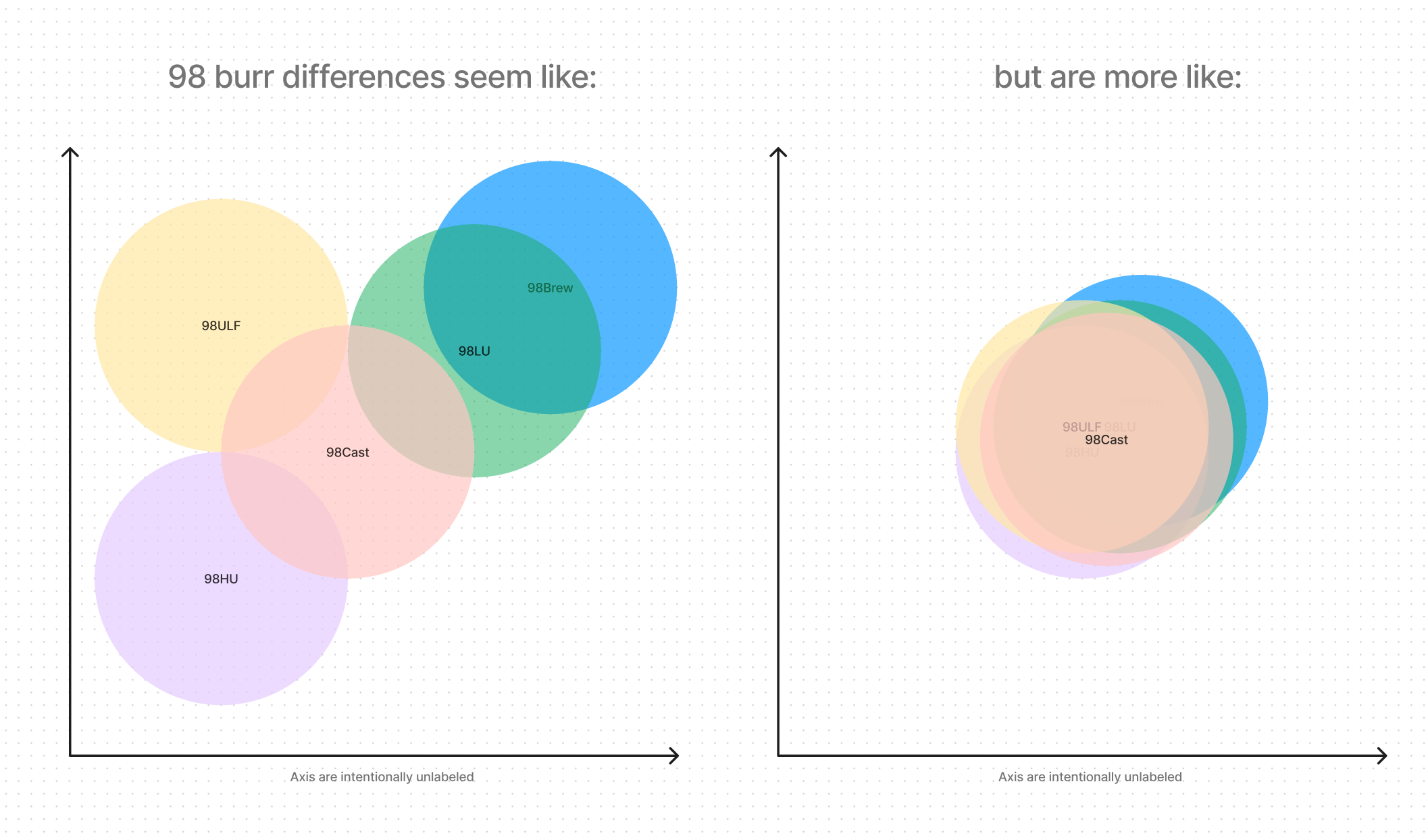
SSP 98 HU
Generally the go-to intense flavor 98 burr. When it came out considered the 98 counterpart of 64MP but with more body and more intensity, and less finicky. Option-O uses the 98HU as standard burr for their P100 grinder.
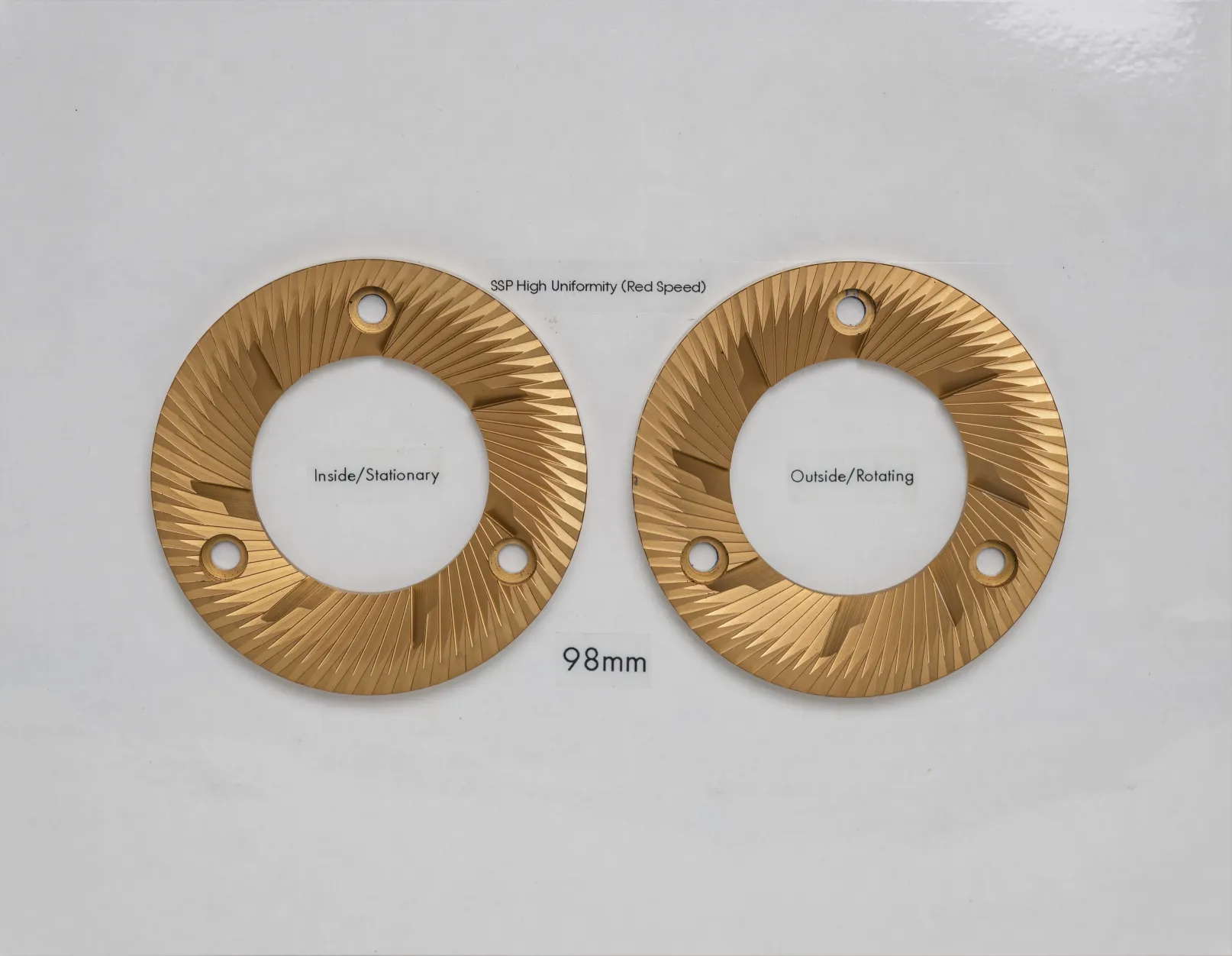
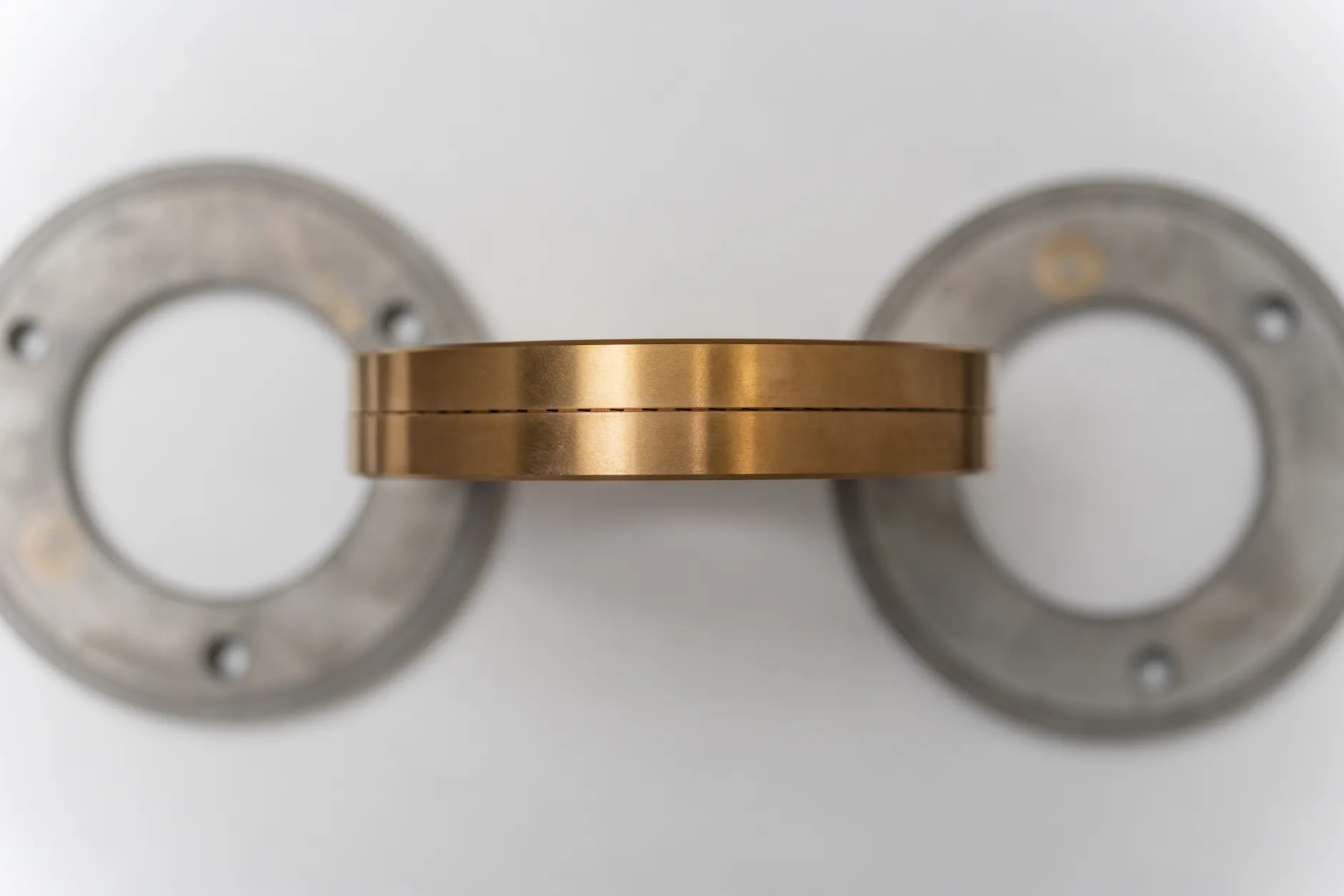
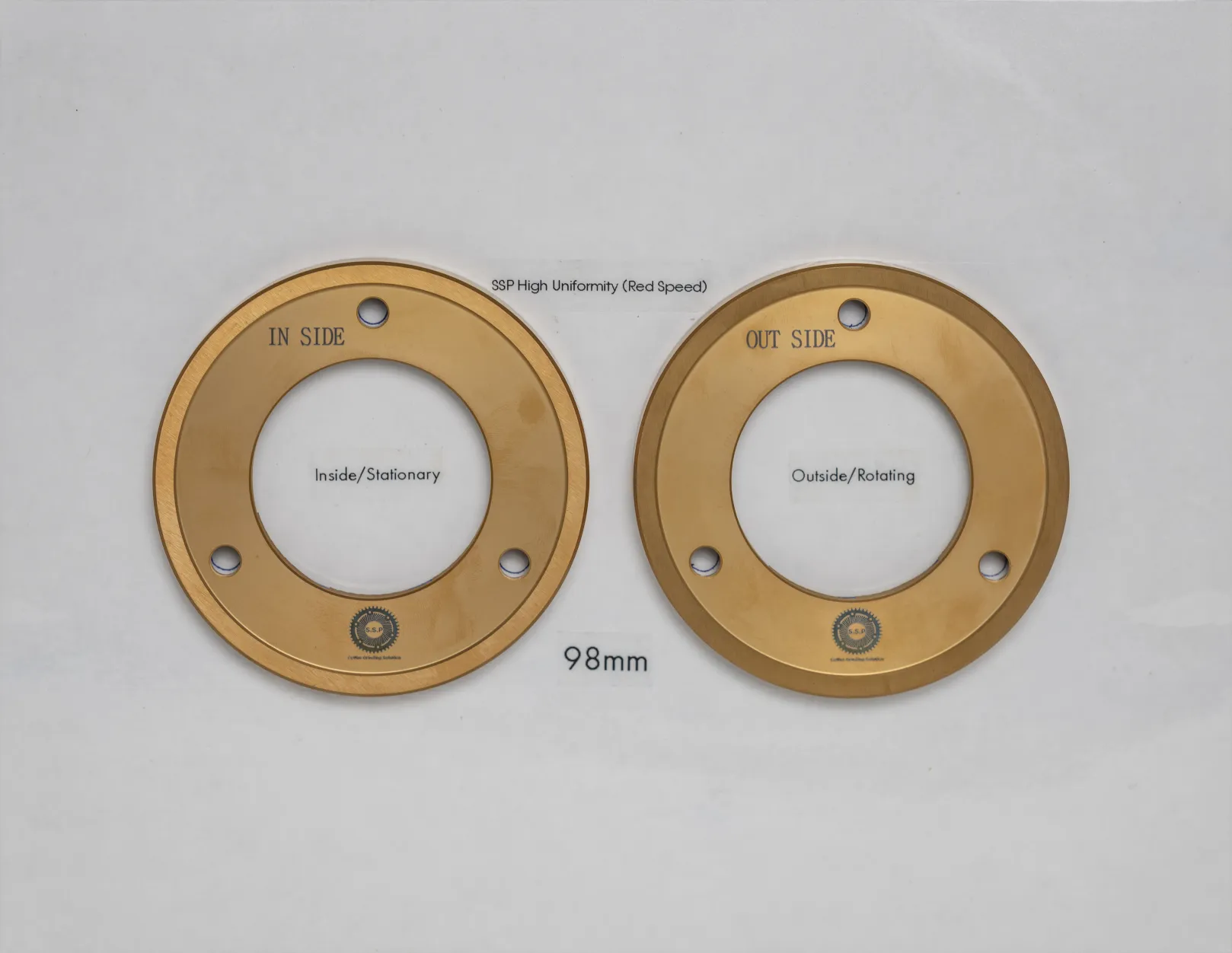
Good showcase, apart from prebreakers (which aren’t always the same on all revisions), to distinguish HU and LU.
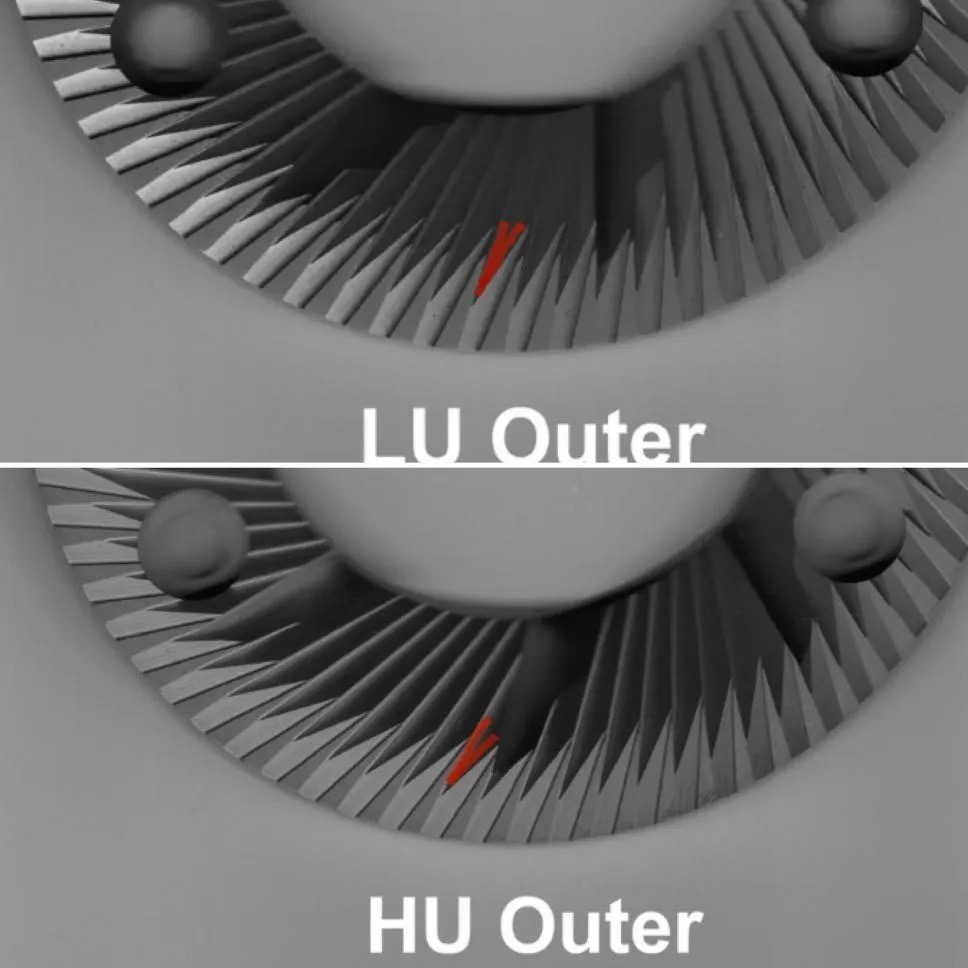
LU vs HU outer edge
SSP 98 LU
Great flavor seperation, lower body & less fines than HU, doesn’t really do classic espresso, however many people prefer turboshots from the 98LU.
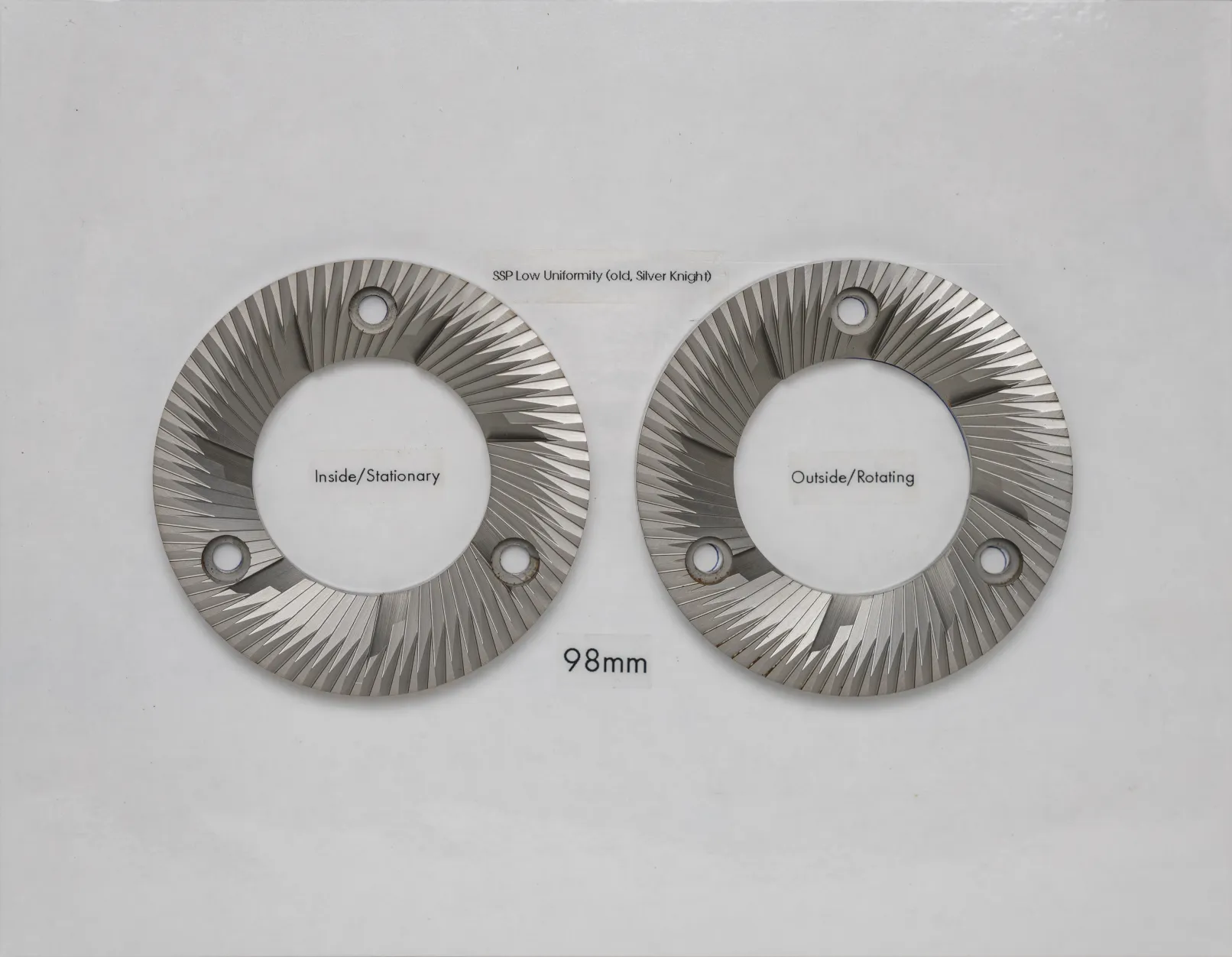
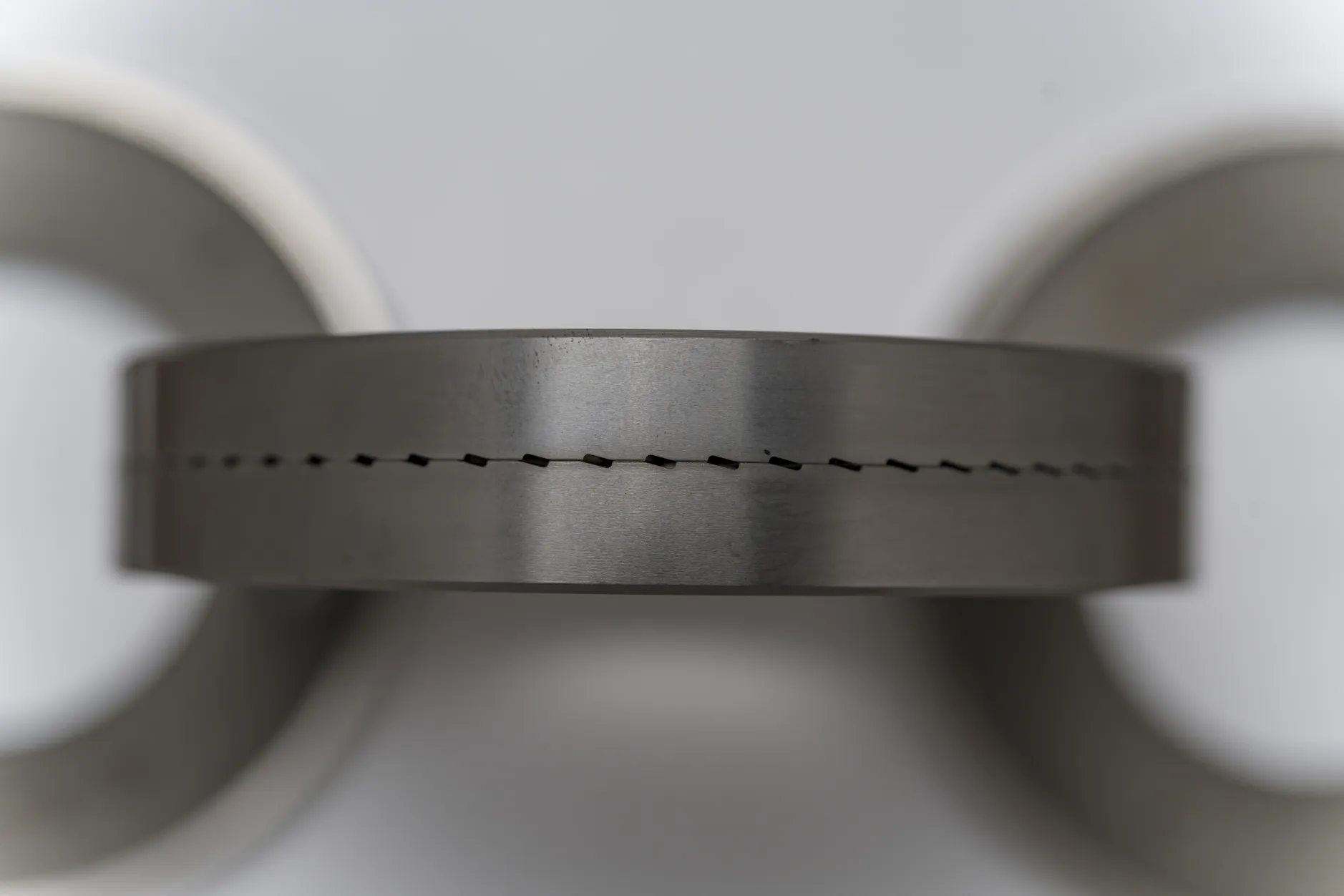
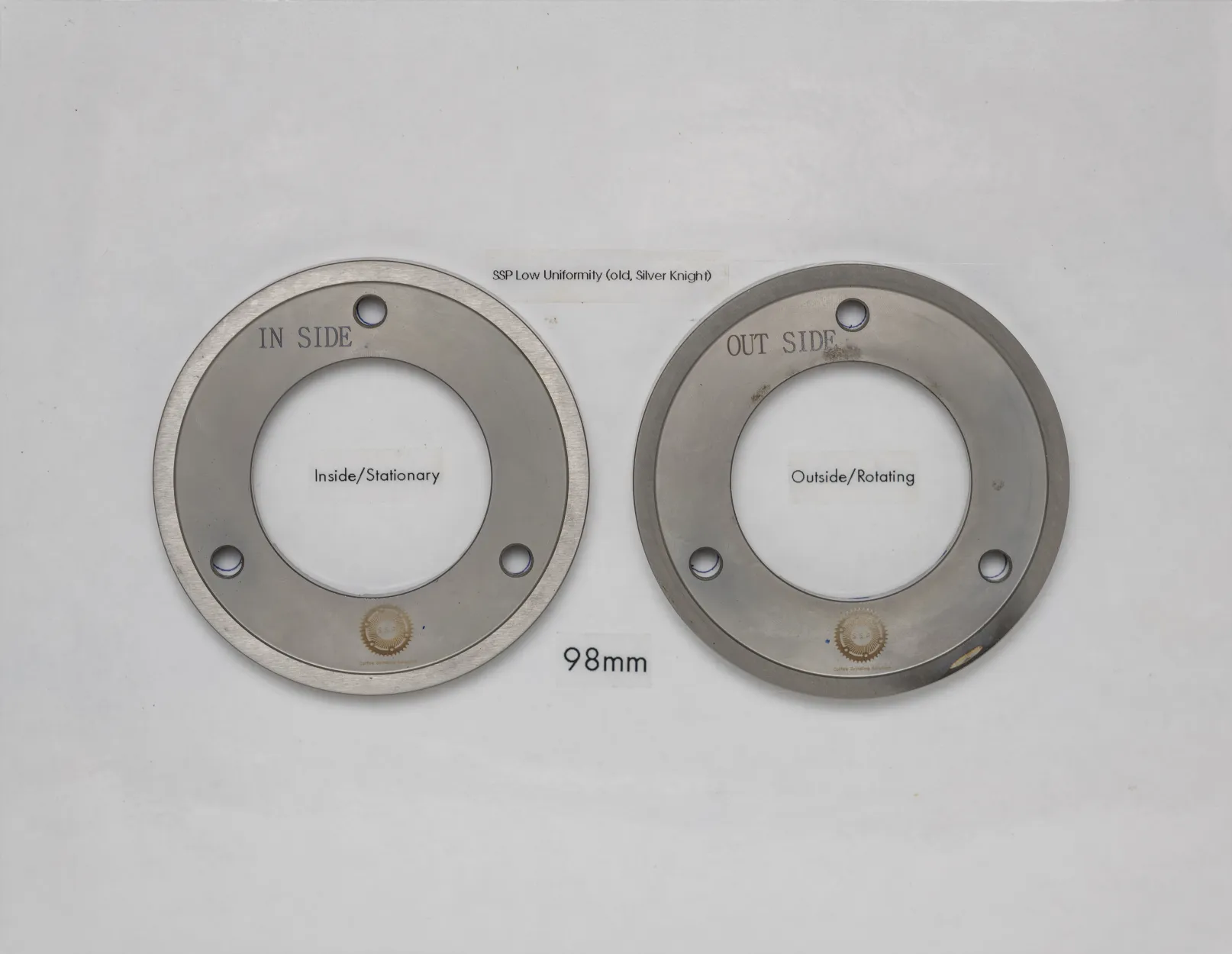
SSP 98 Brew
Consensus very good, however, can be very sterile. Would be considered the alternative to 98HU if you want to be able to do classic espresso.

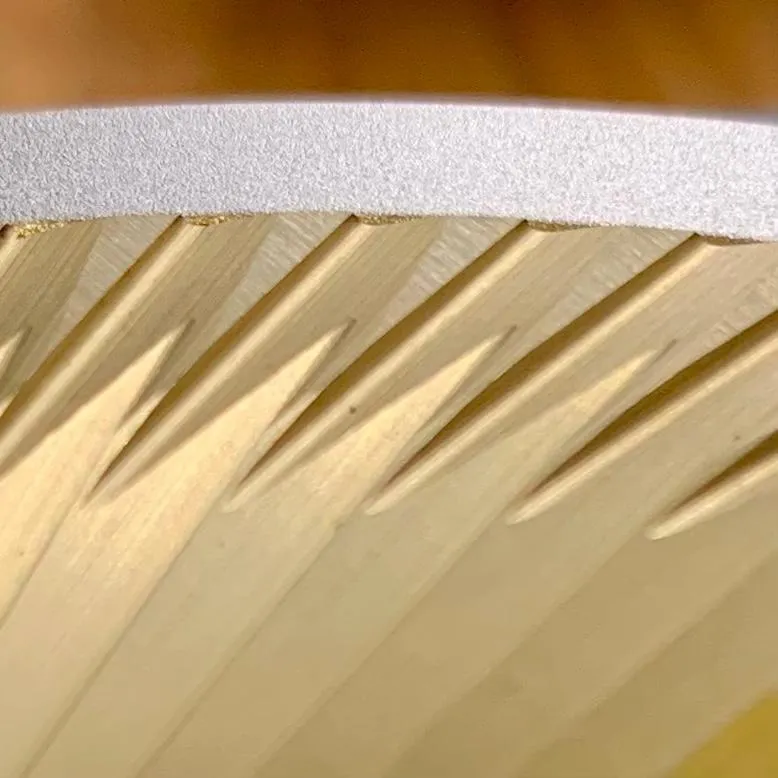
SSP 98 ULF
SSP 98 Ultra Low Fines - Review from @musicoffee: Nice acidity and sweetness levels, more body and lingering aftertaste compared to 98 Brew, less clarity/seperation but not too bad, pretty juicy cup with more of the mid and bass notes where Brew is very focused on high notes like florals. These mid and bottom notes are to me the more generic traditional coffee notes like caramel/chocolate/toffee/nutty/cooked and dark ripe fruit etc. which I think I get the least of with Brew (especially lowest darkest notes) and Brew can be very tea-like and probably a little alien to normies with a lot of beans. The cup has that machined burr presentation but there is some blending and complexity to it and a little bitterness in the mix at least at this extraction (same TDS as I did with Brew and HU with this bean, will try more coarse). Still SSP presentation but a little toned down compared to HU/Brew/LU. I don’t find signs of less fines with these in use.
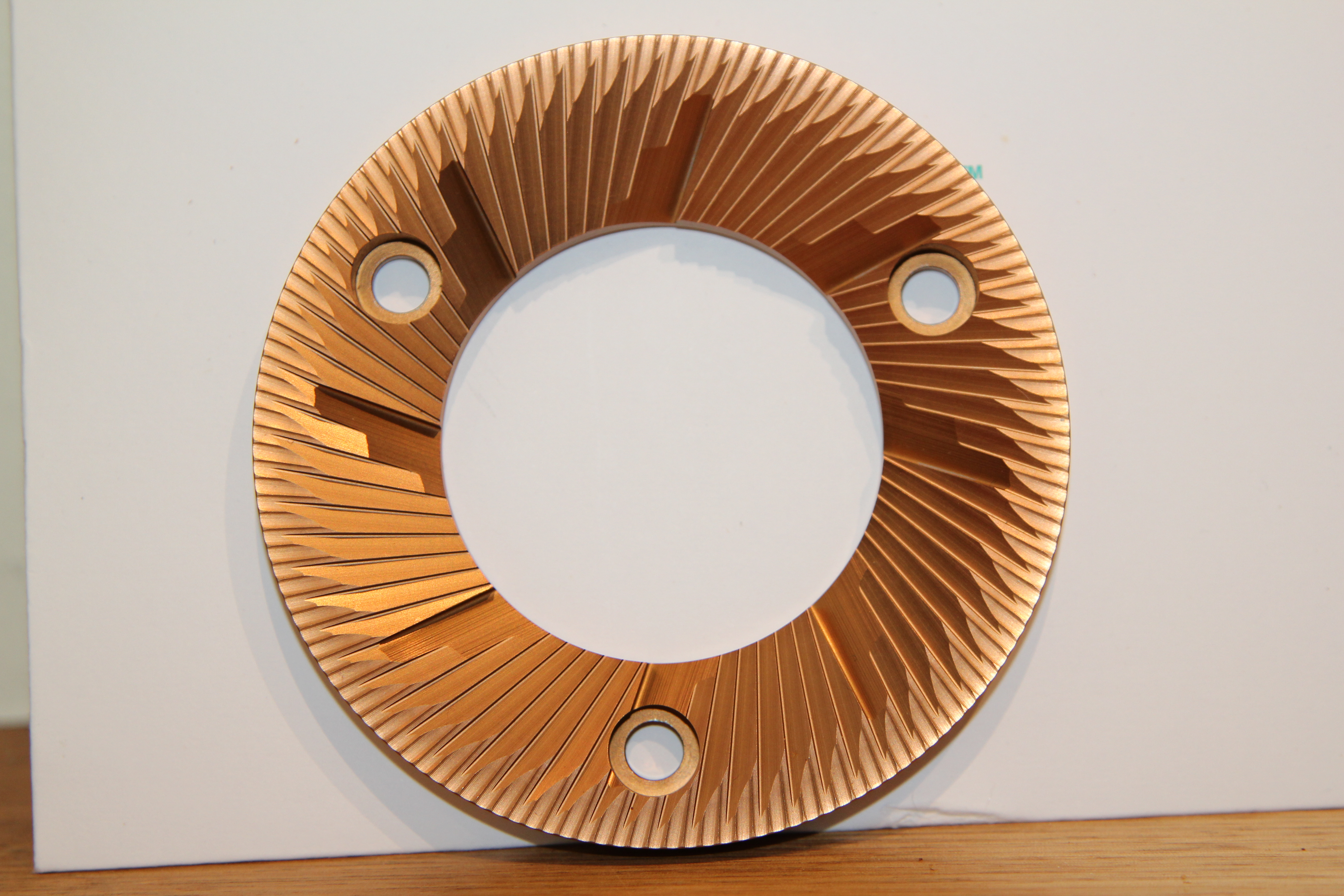
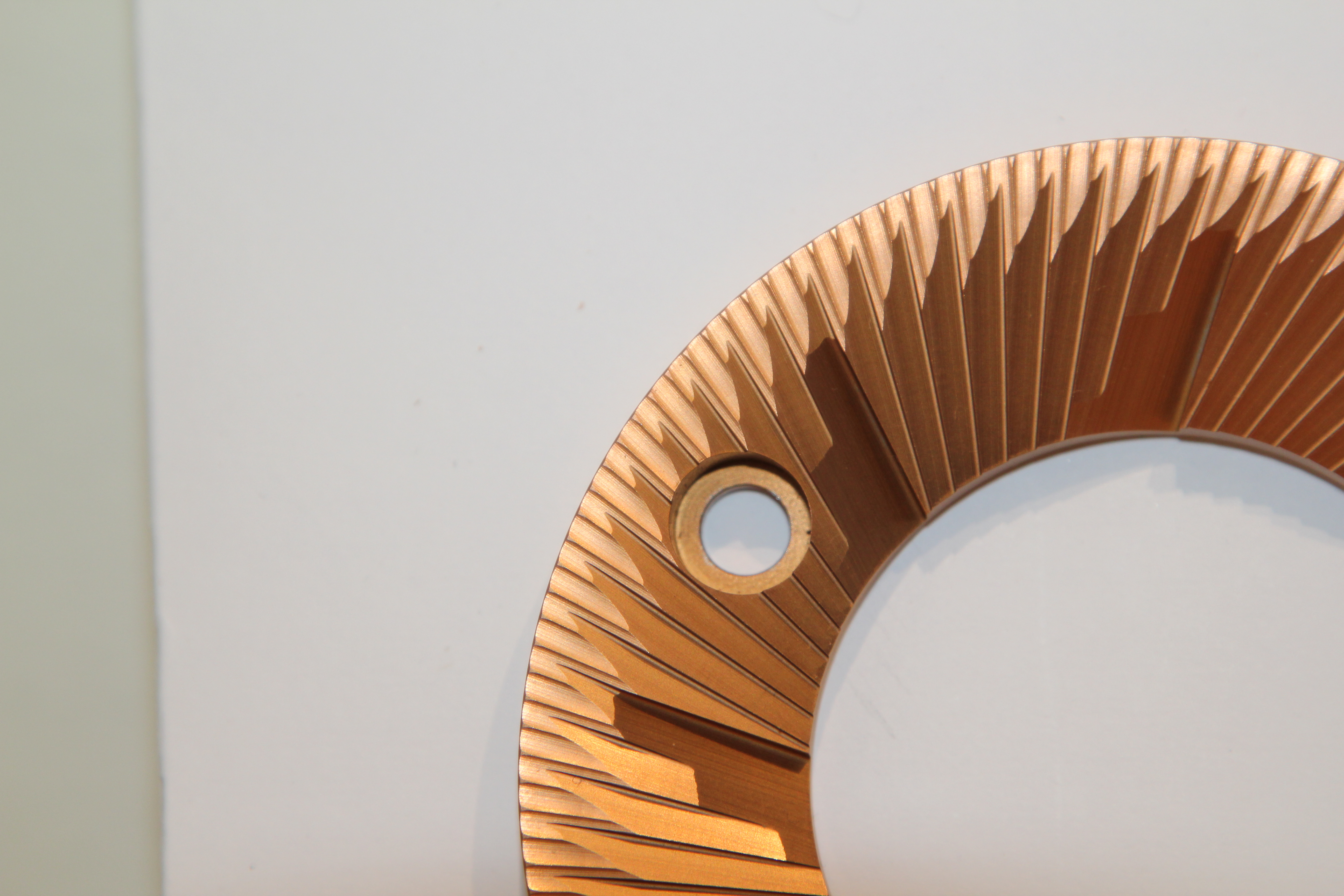
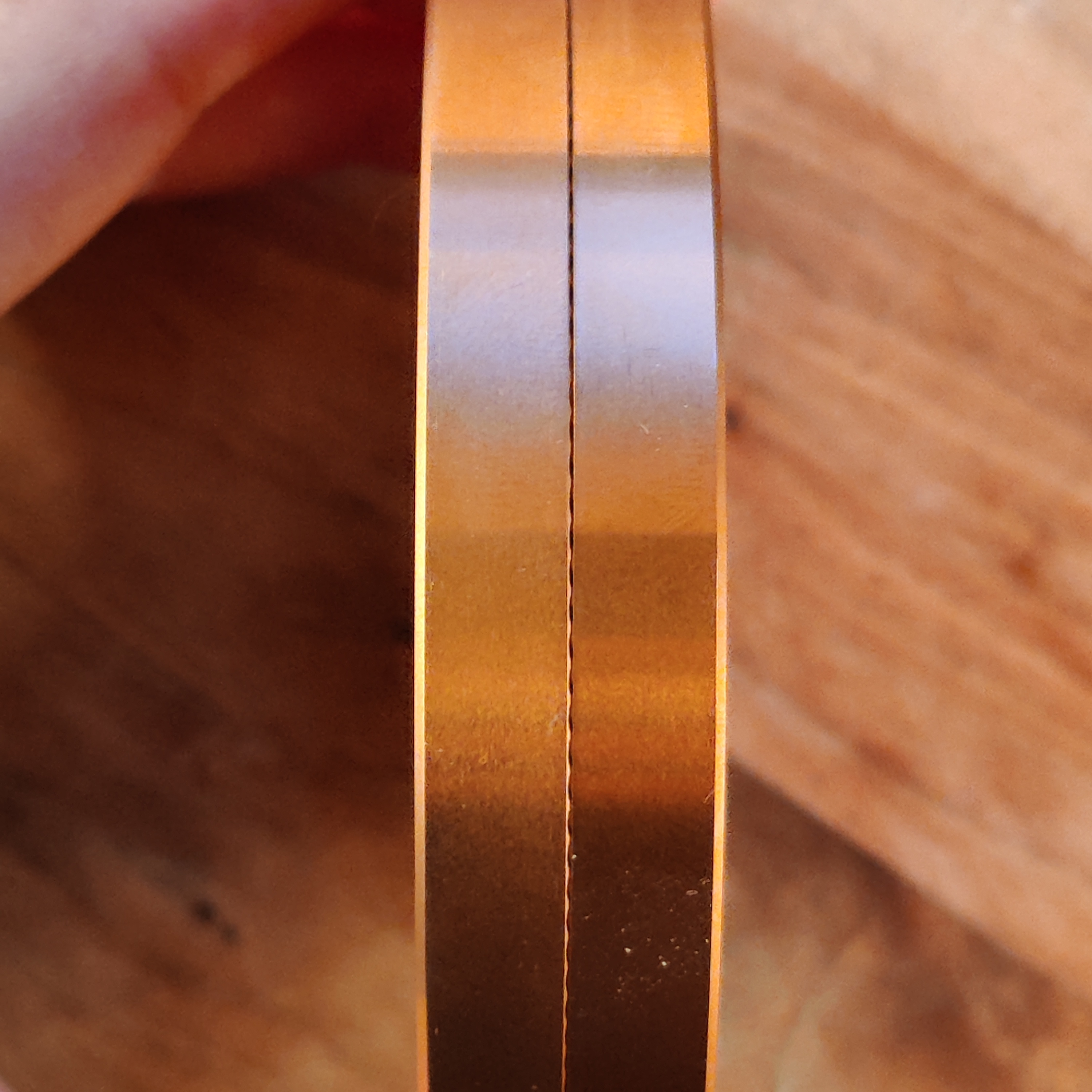
Mahlkonig EK43 pre 2015 or ‘A’ (revived under SSP 98 cast or EK pre 2015 clone)
The original MK / Ditting burr was what made the EK. Still considered as a good burr, however around 2015 the EKs started shipping with a more finey burr, to accomodate the recent hype in using it for espresso. We think Mahlkonig themselves actually had no idea why it peaked interest at the time. Very similar looking to post-2015. Serial number of pre-2015 ends with A.
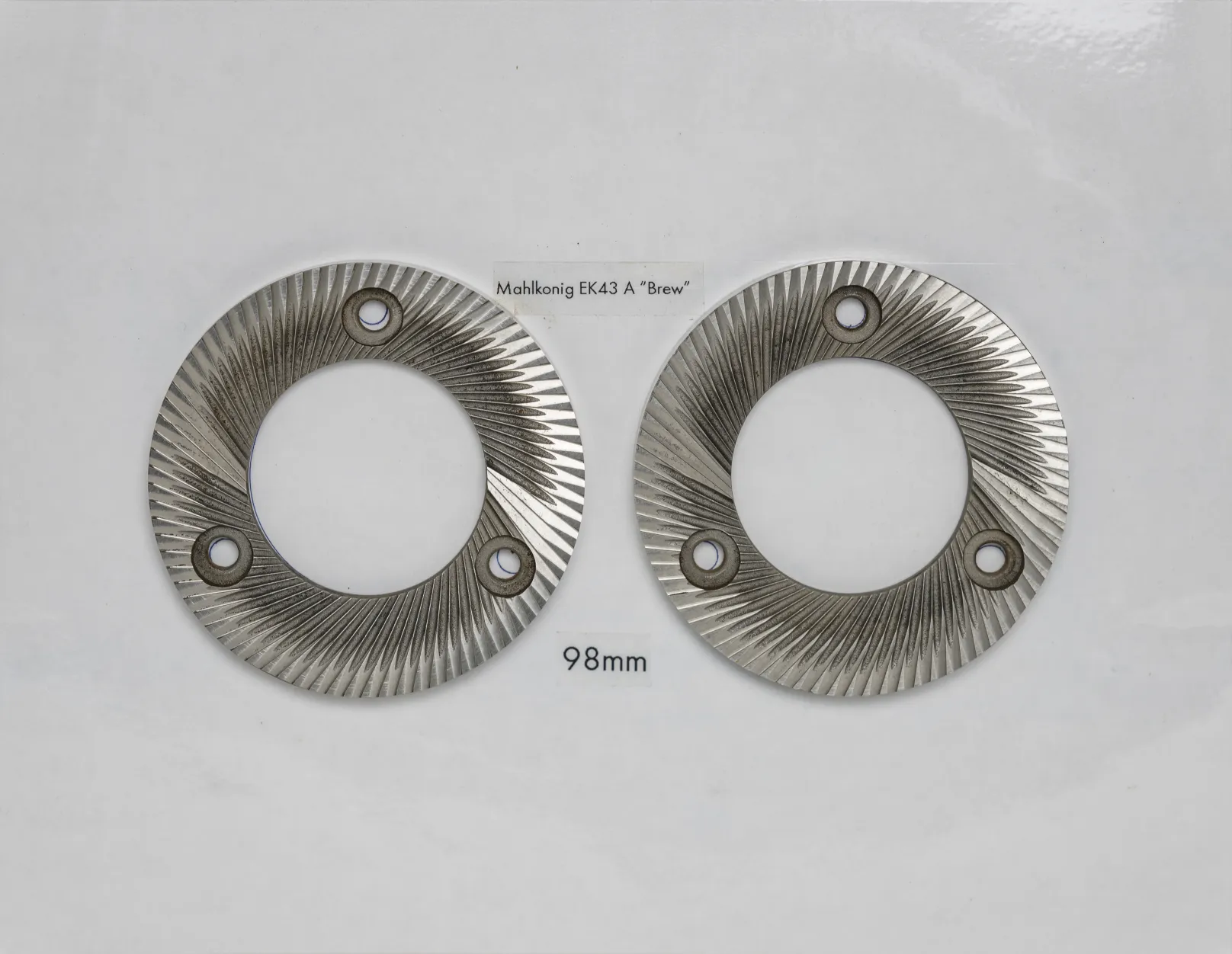
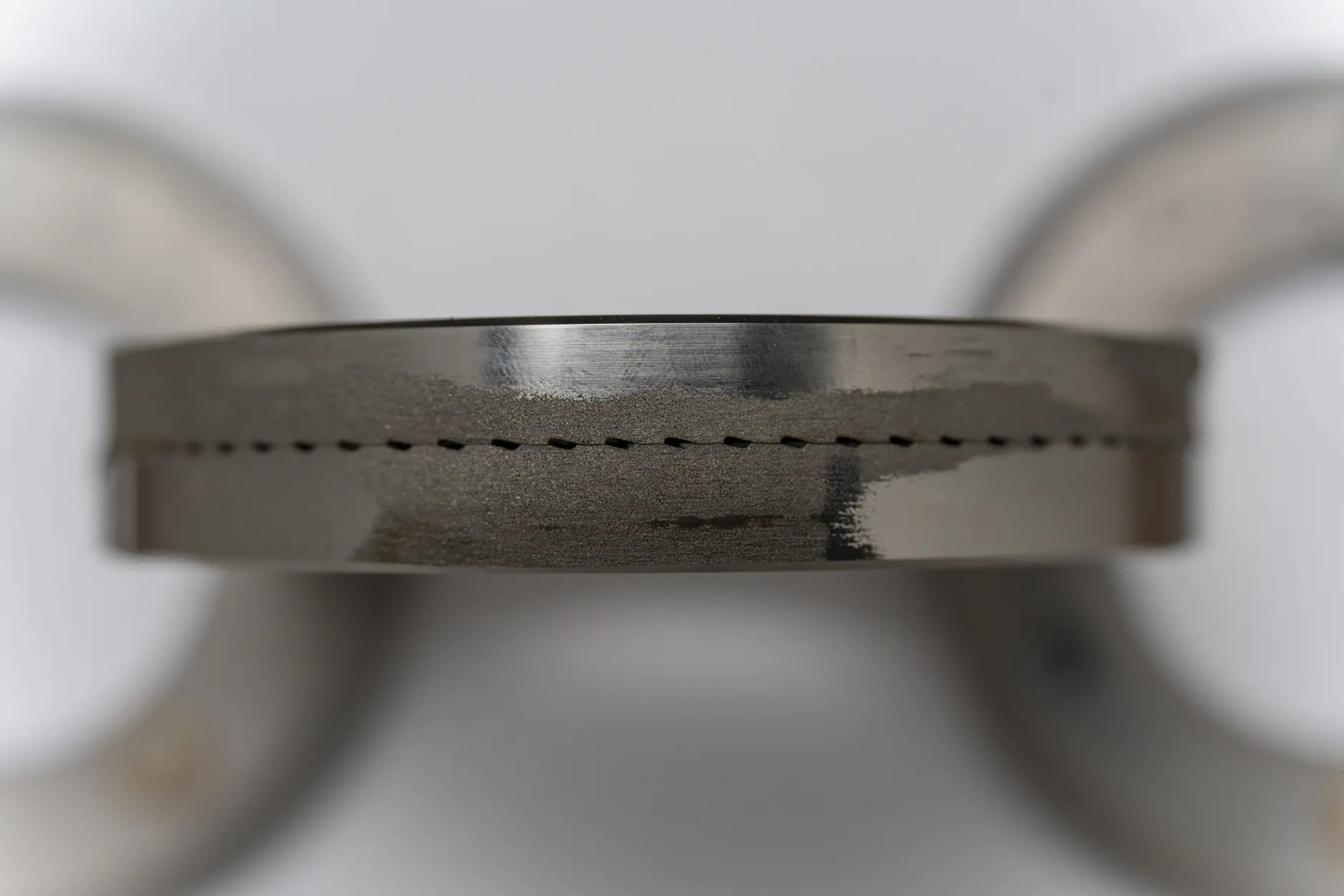
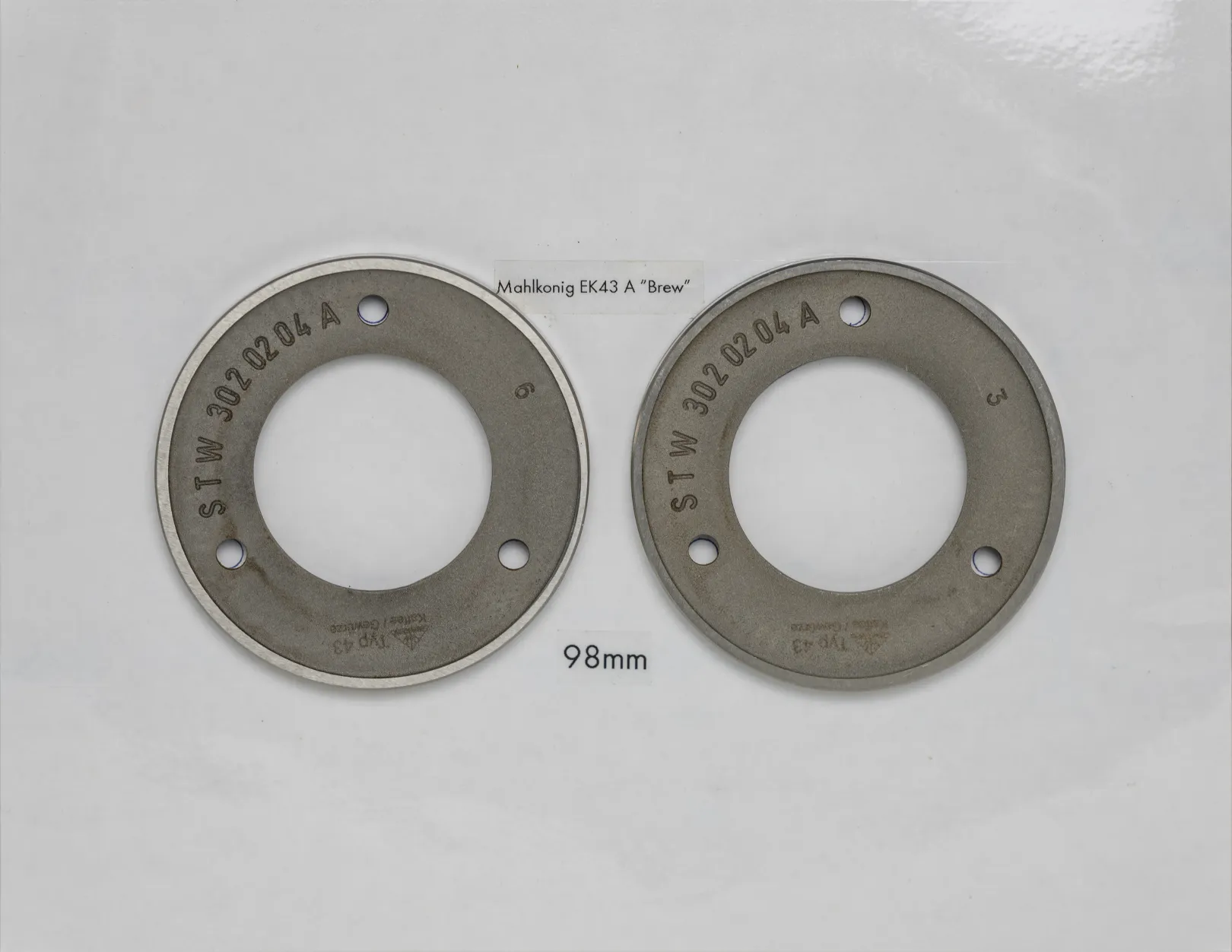
EK43 post 2015 or EK98 ‘B’
The more finey EK burr, not bad, just not as spicey as the old one. The difference between the two is hard to see with the naked eye. Their serial numbers are different (post 2015: ends with B)
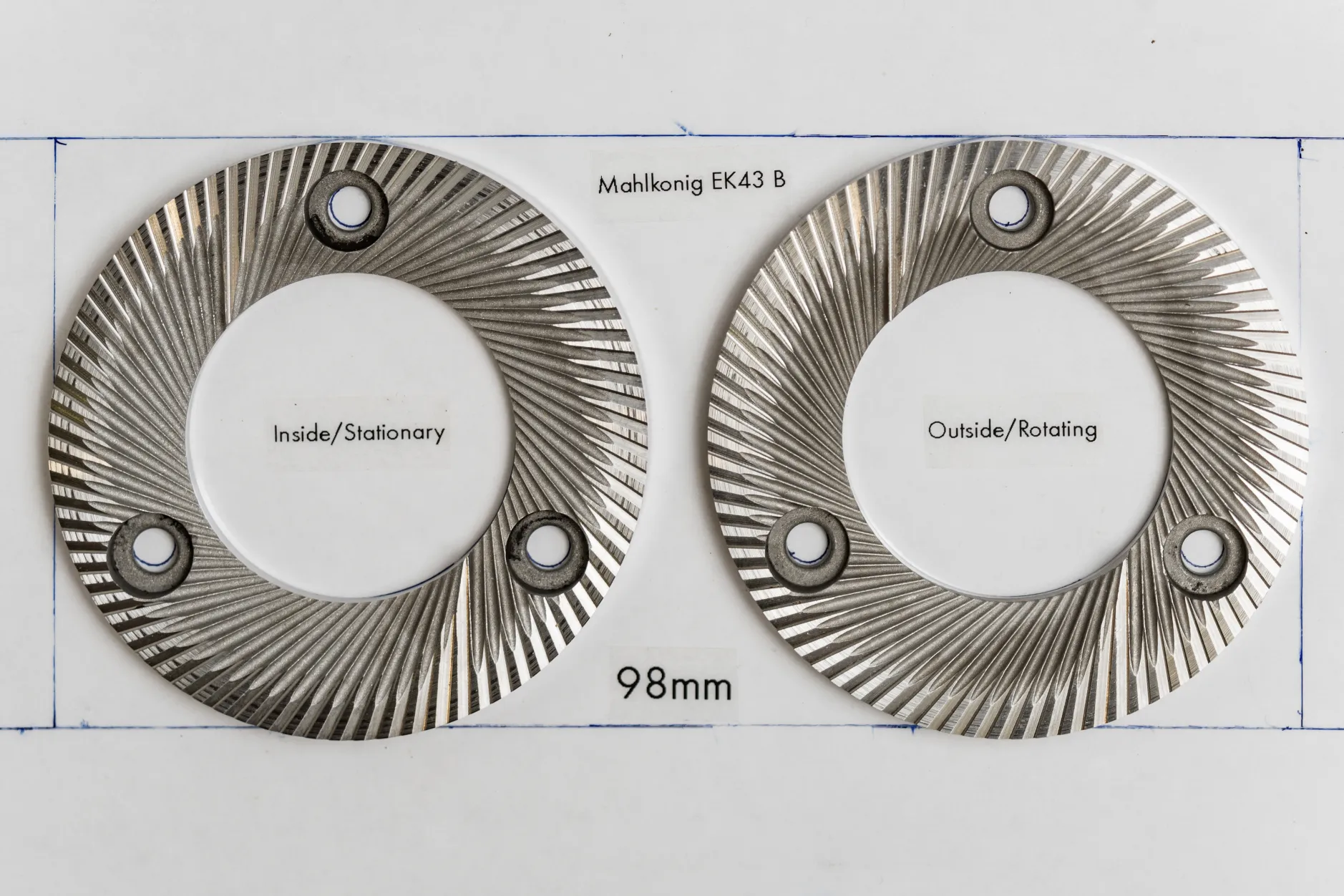


Baliou Ghost burrs 98mm
I can’t tell you much, but aligning these seems dangerous! Completely different design than other burrs, but people have reported positively for filter grinding. If anyone would like to add something here, be my guests.


